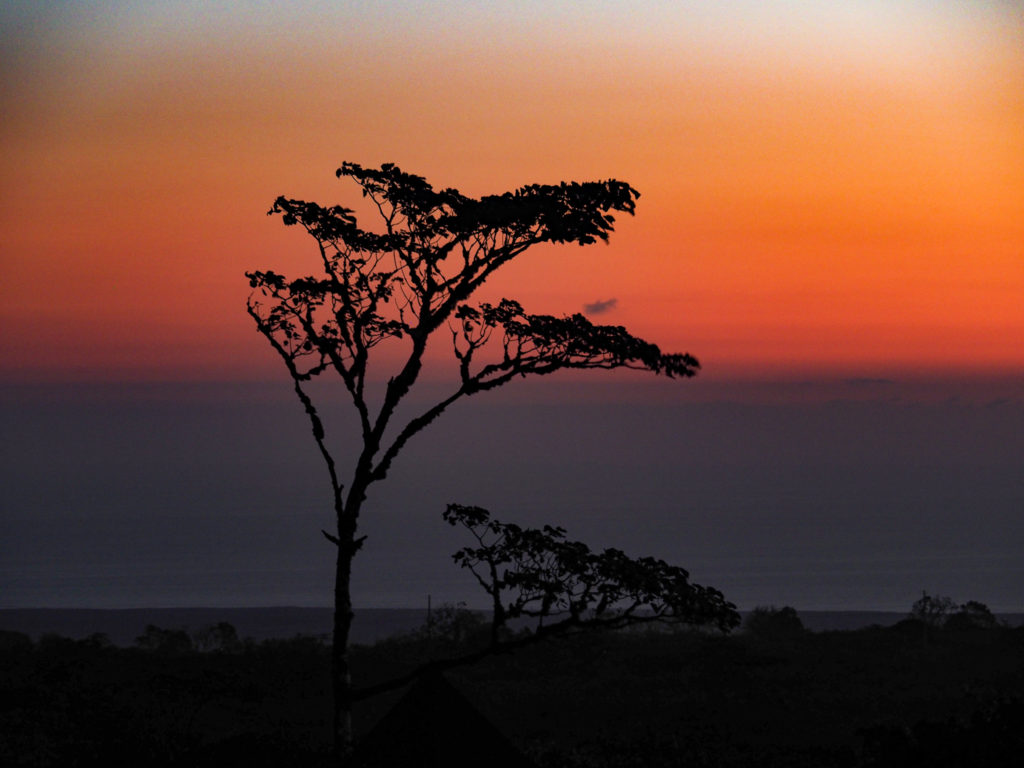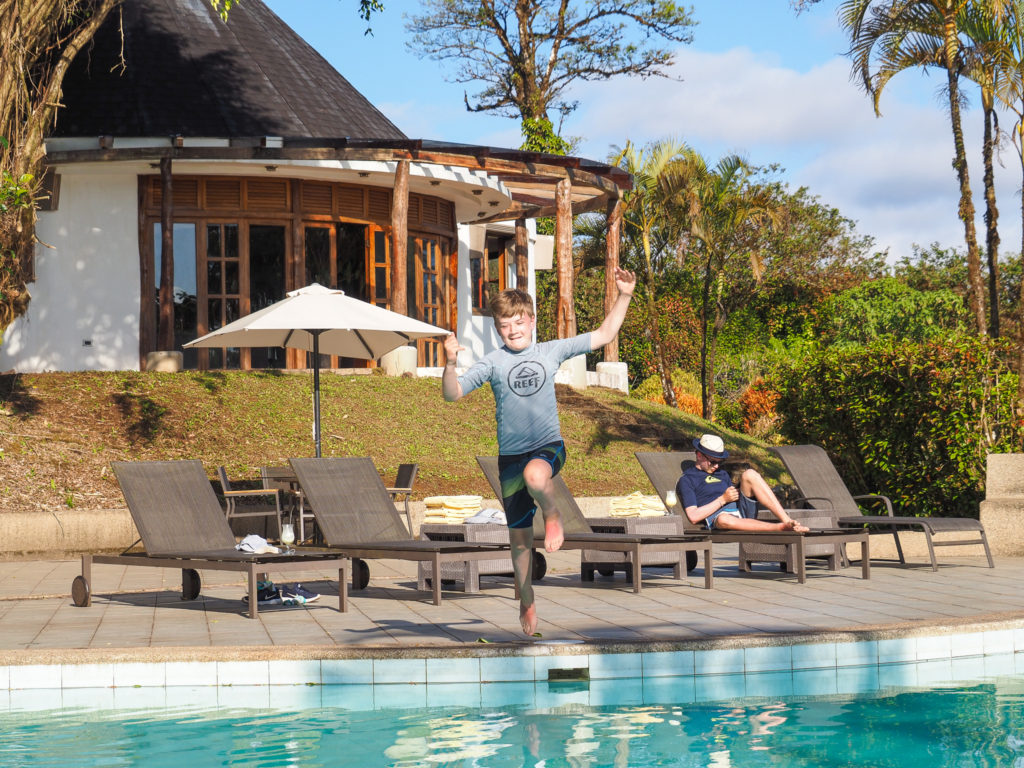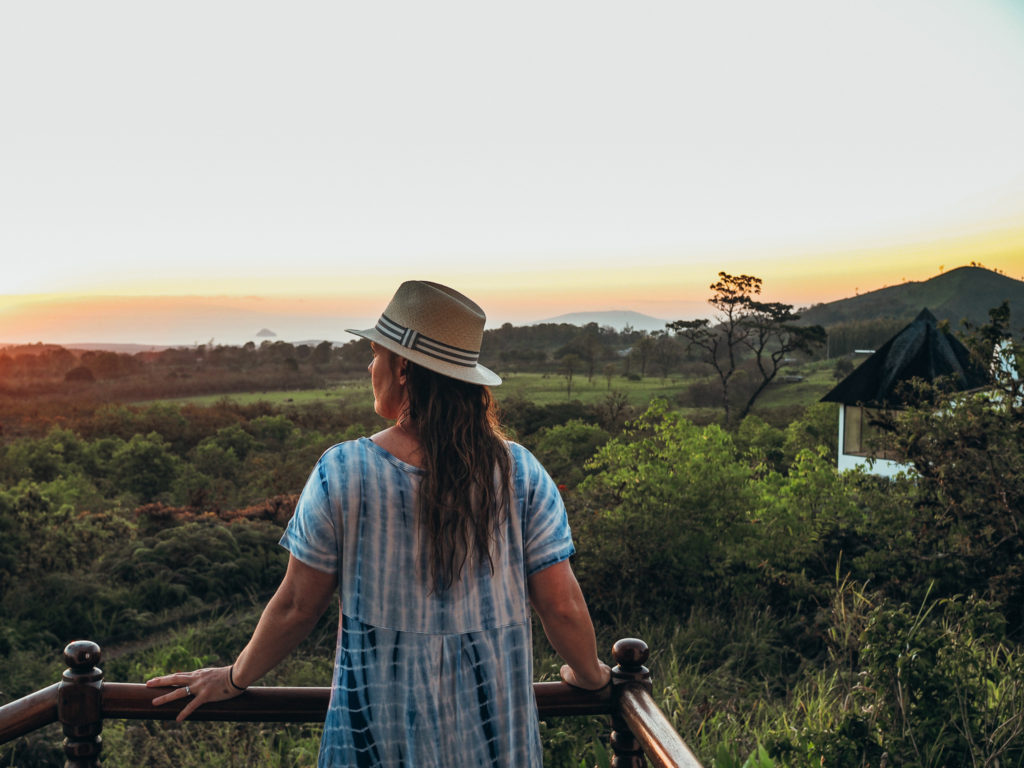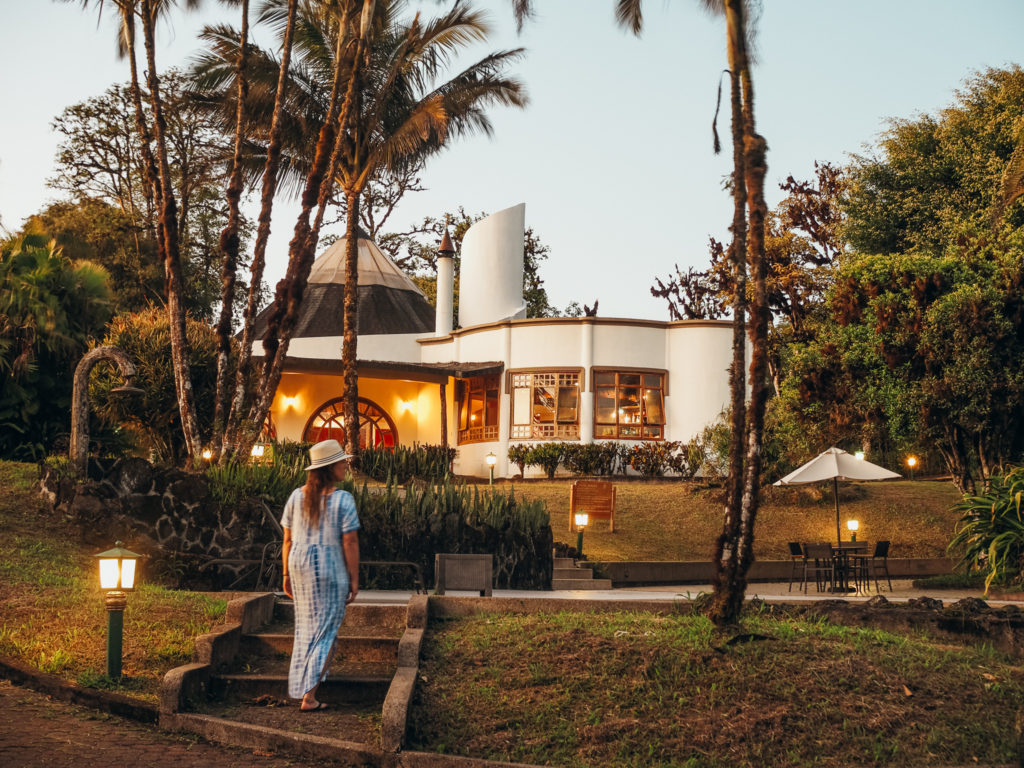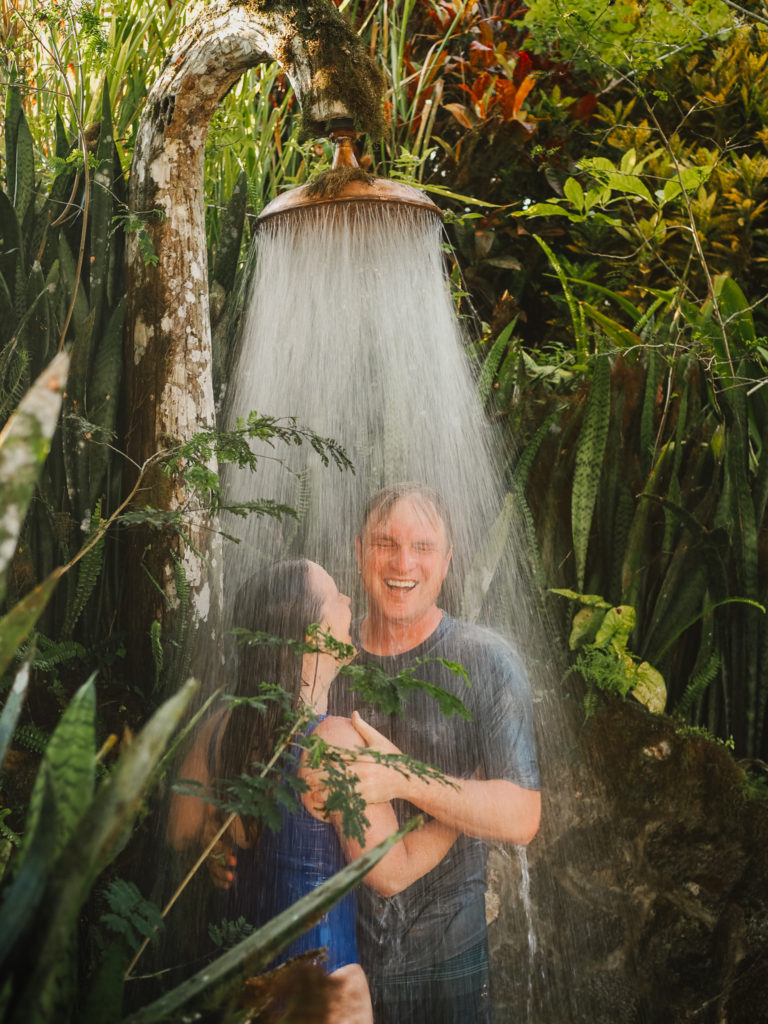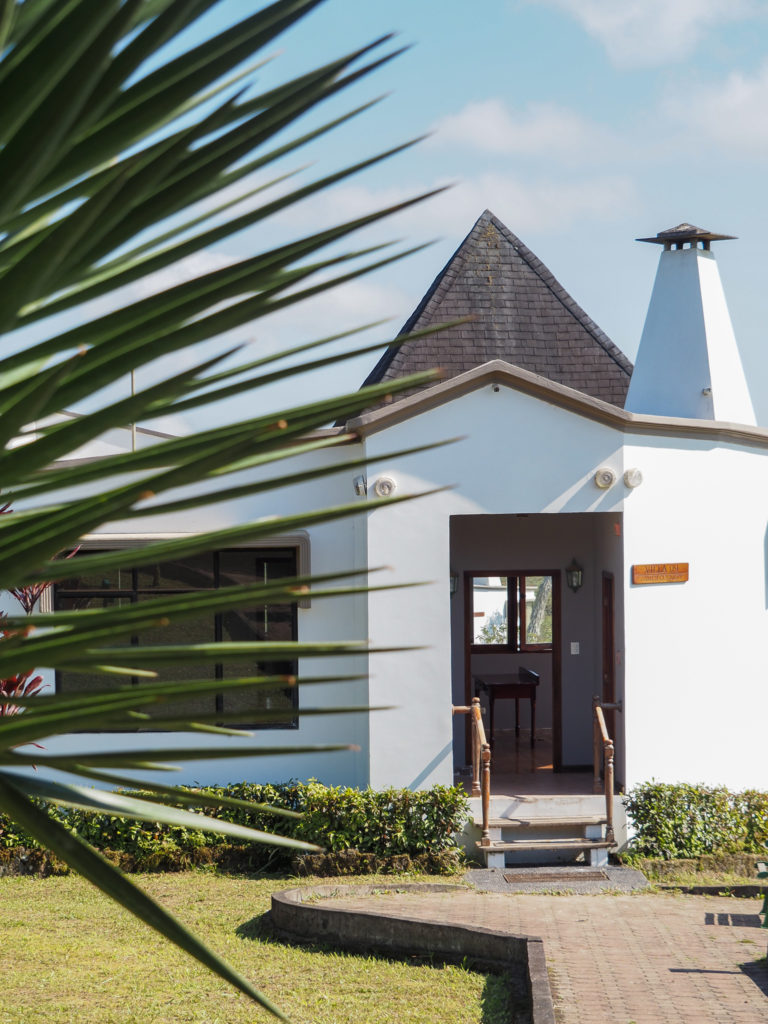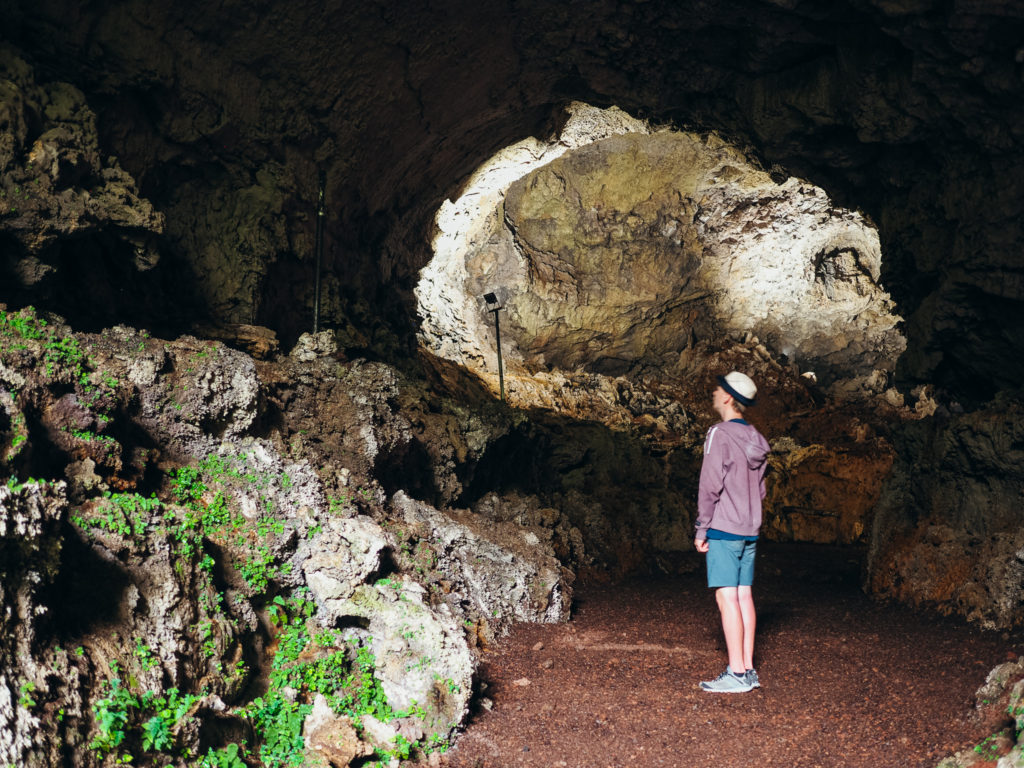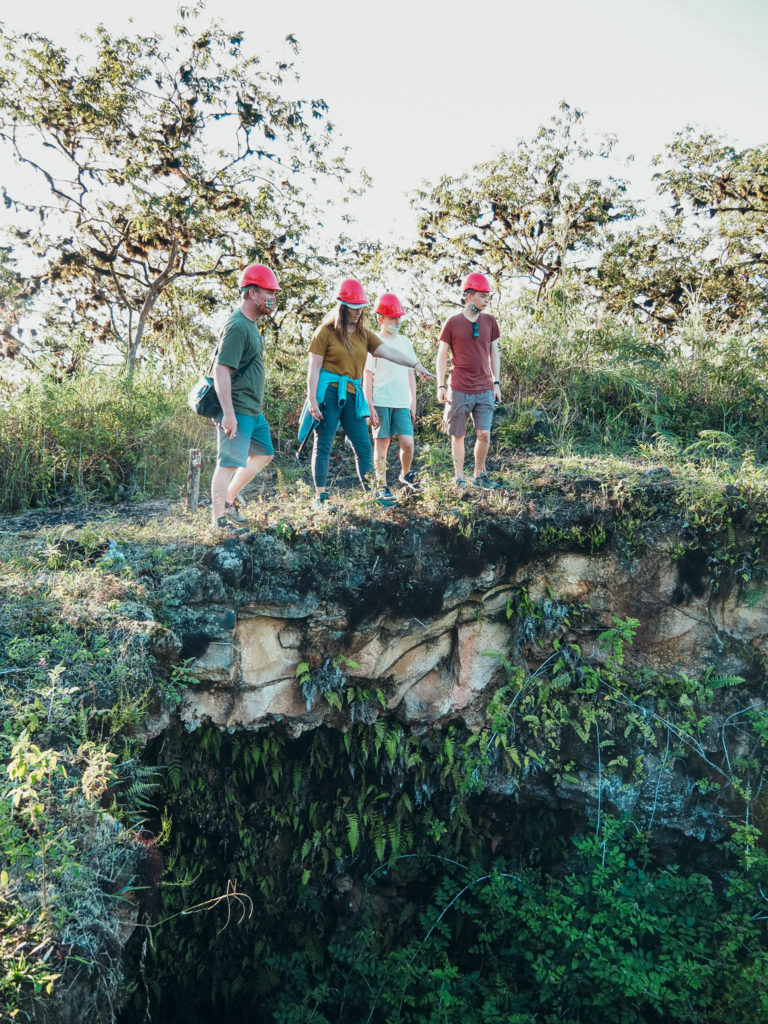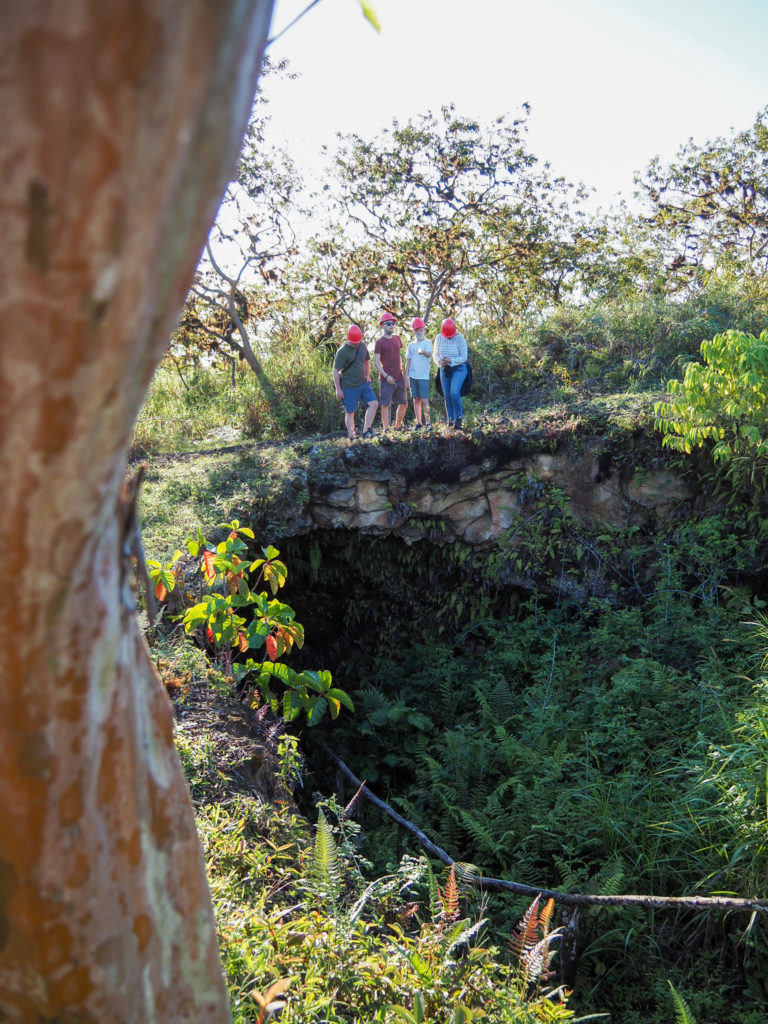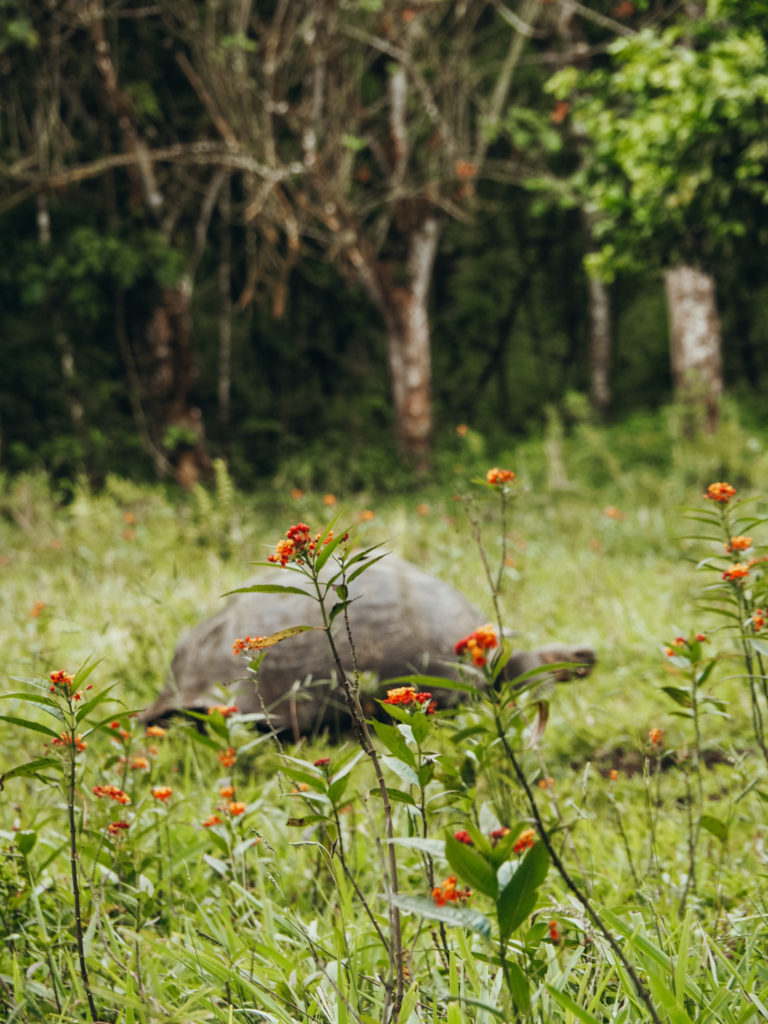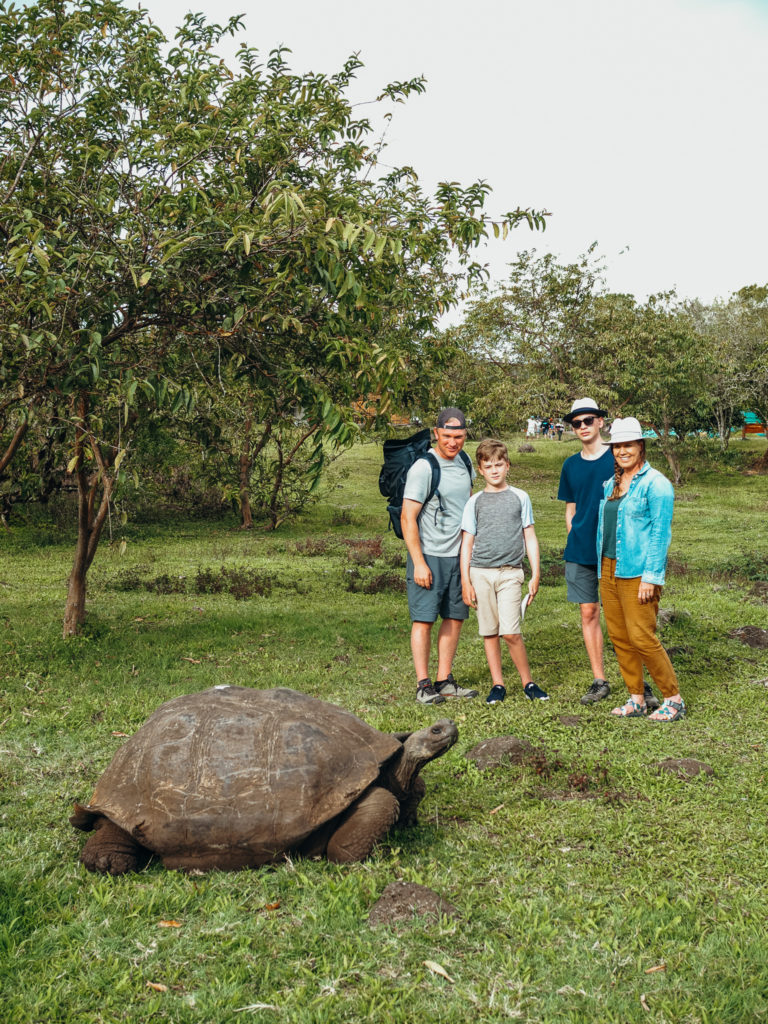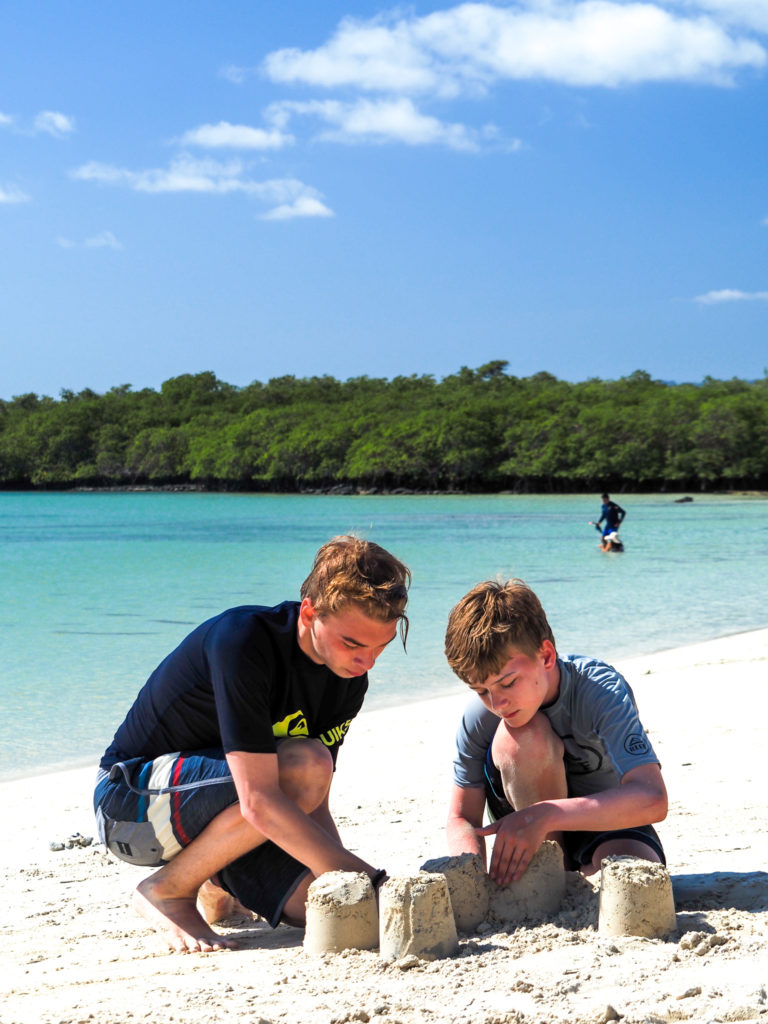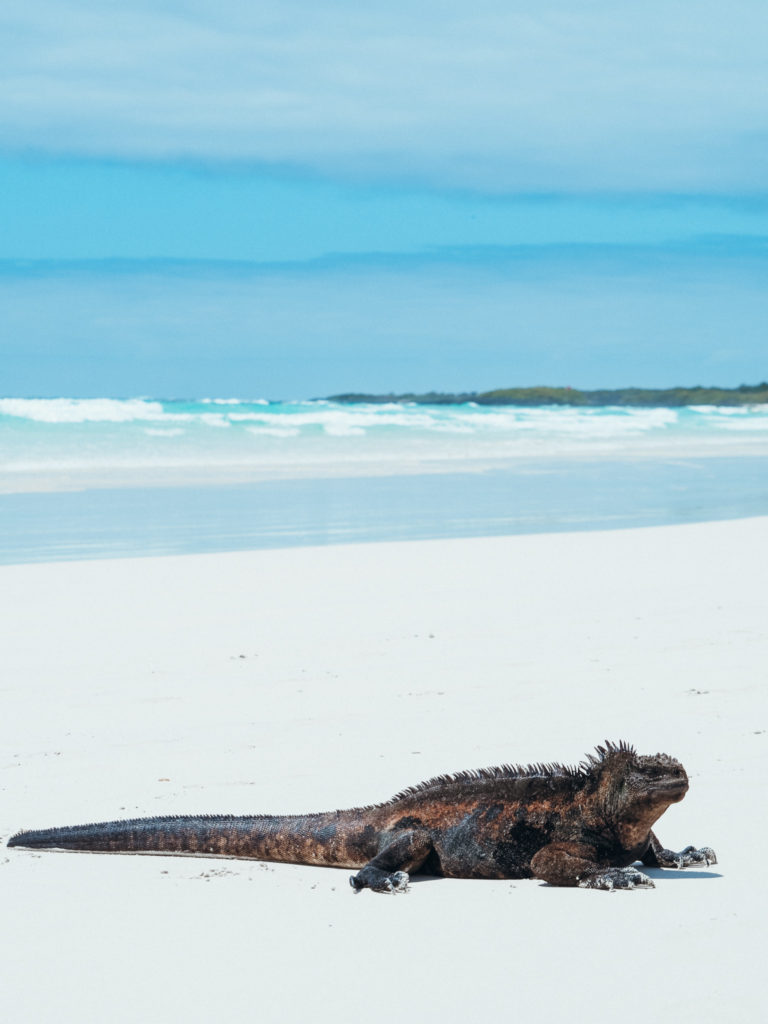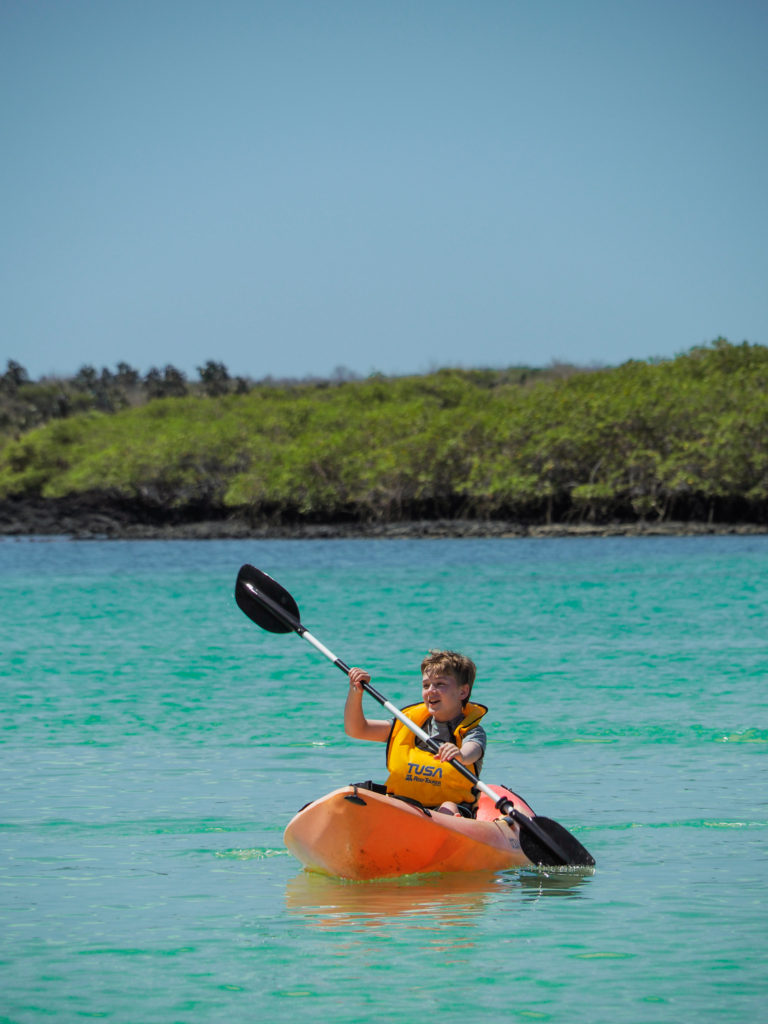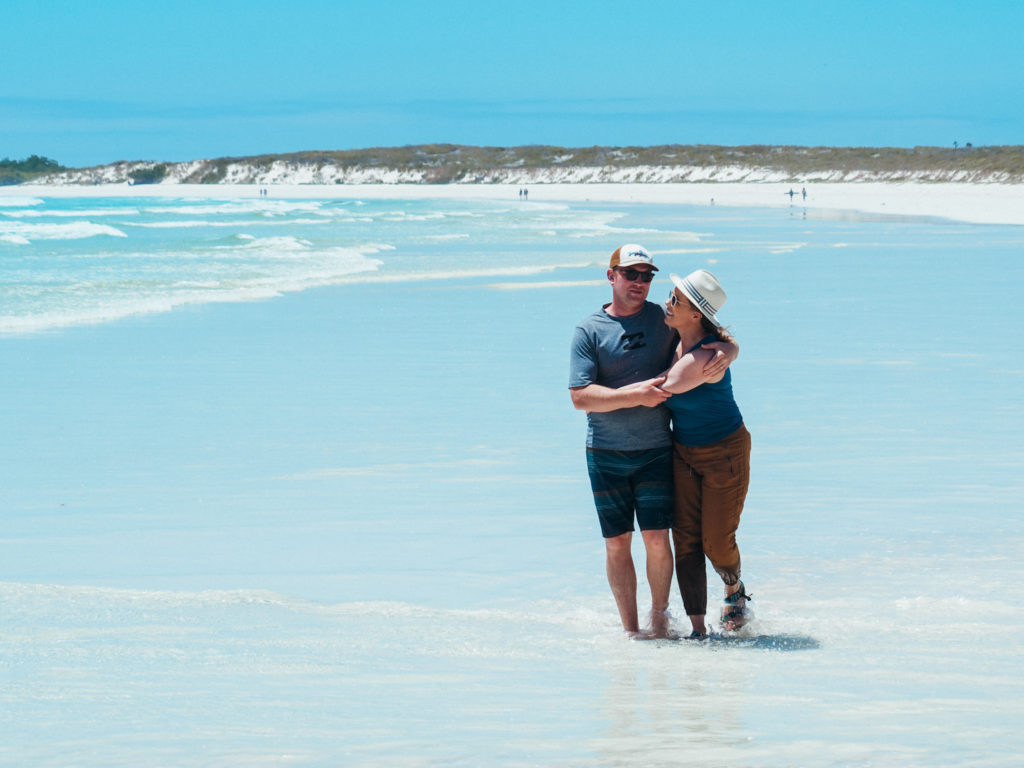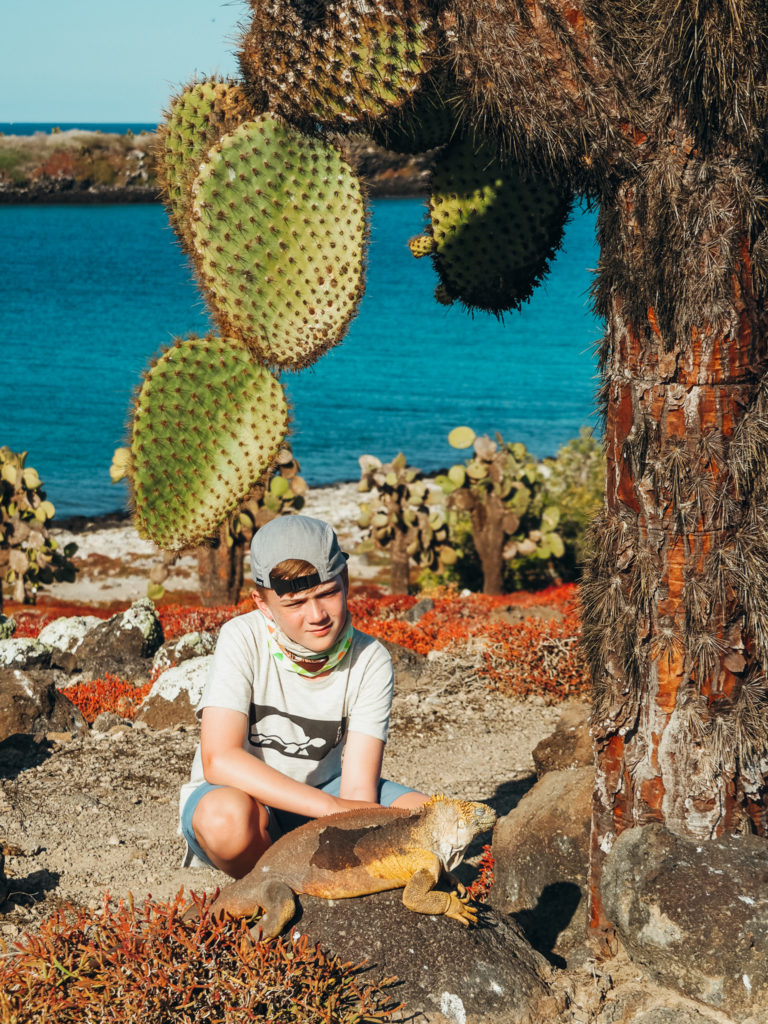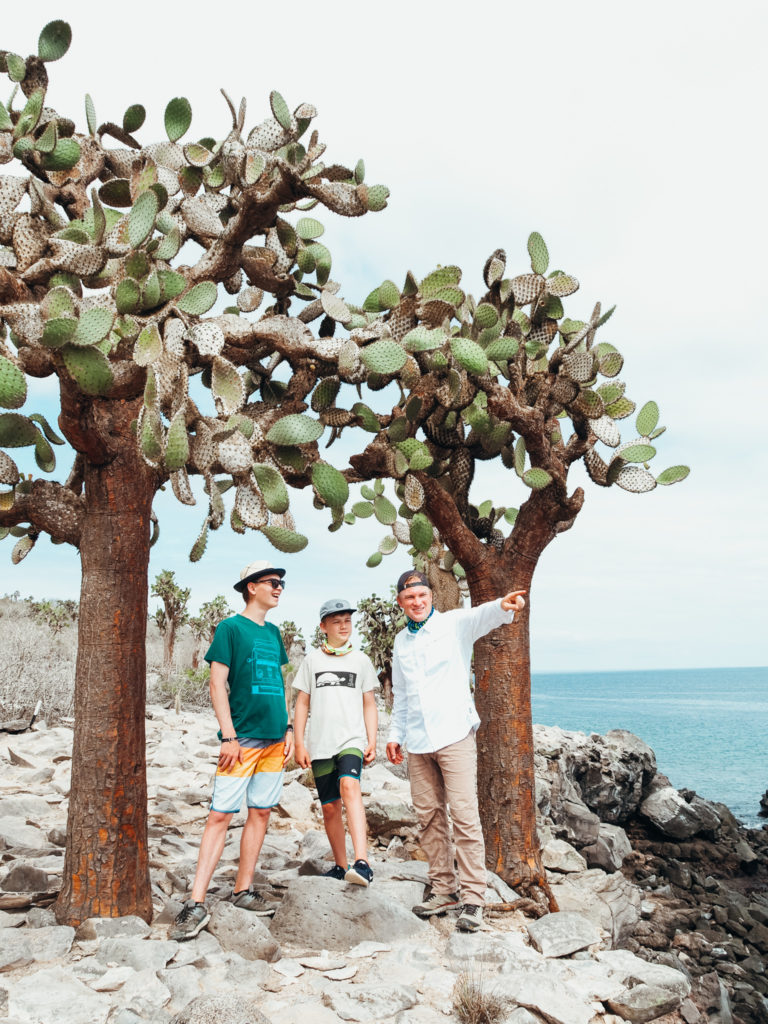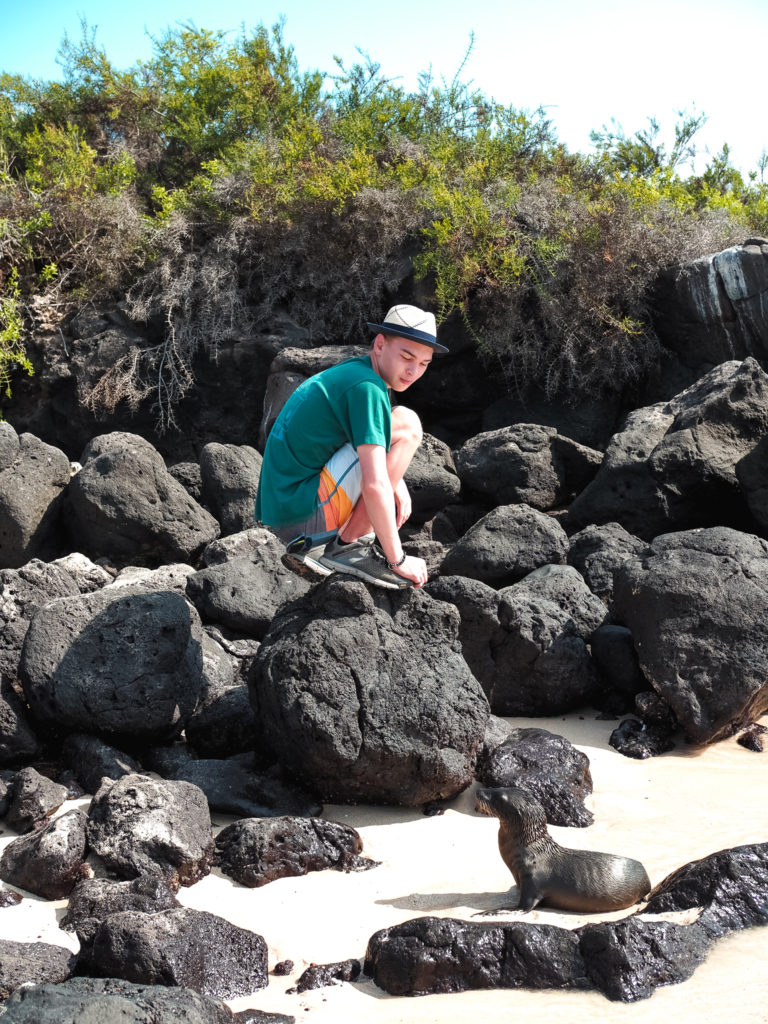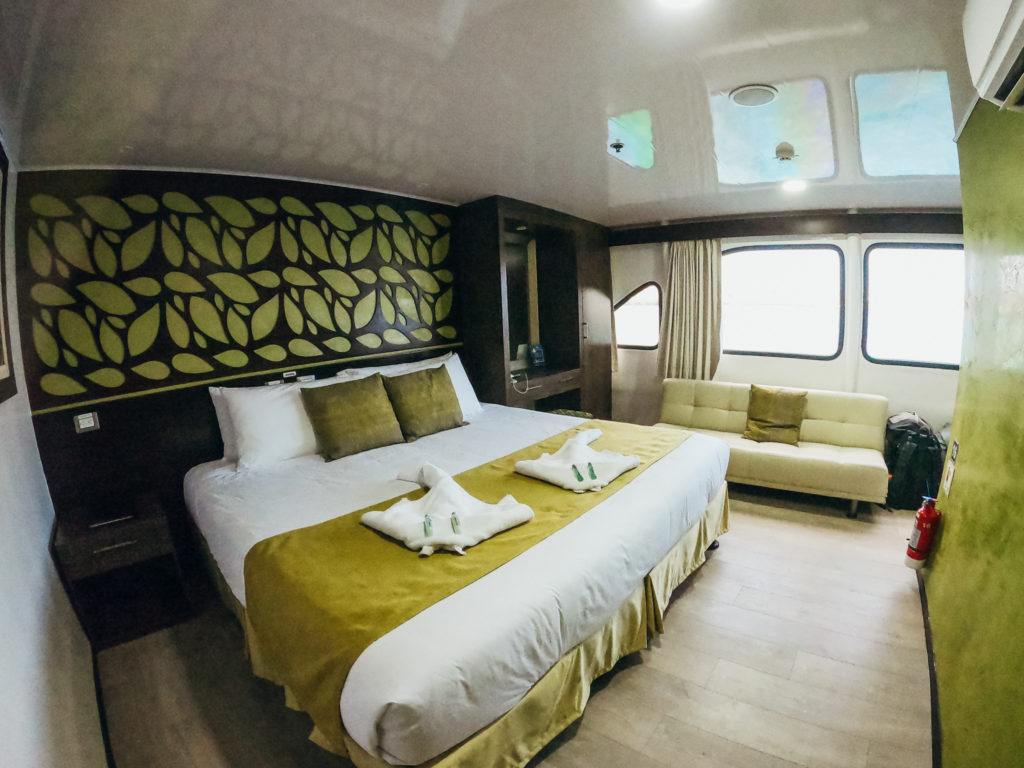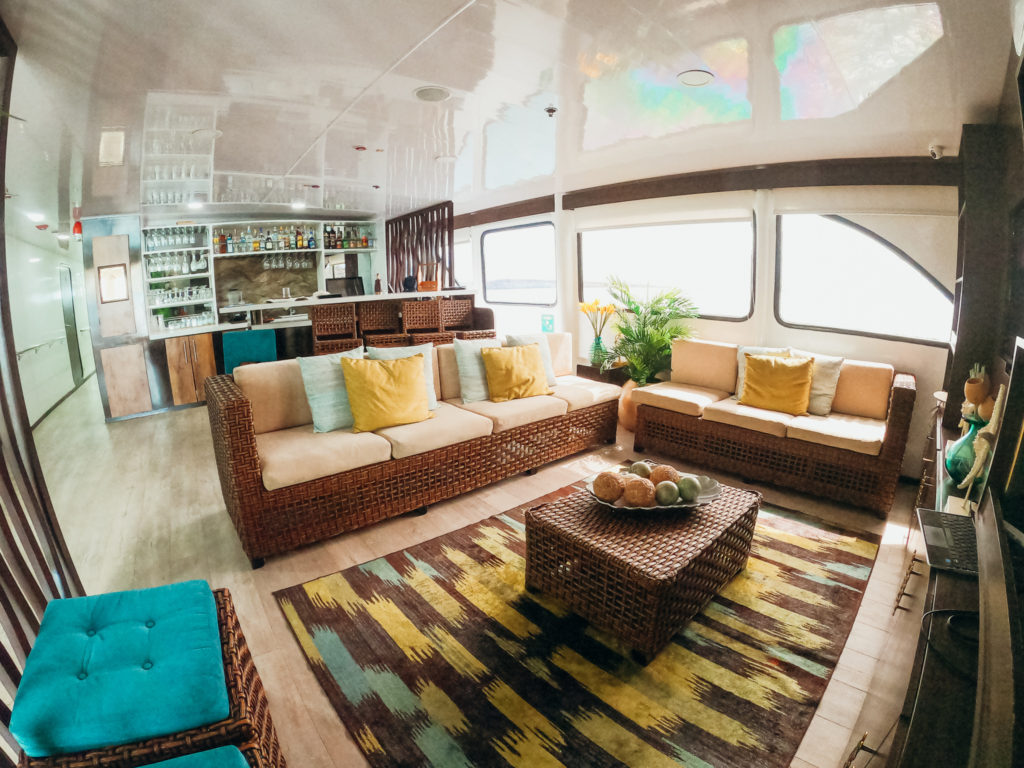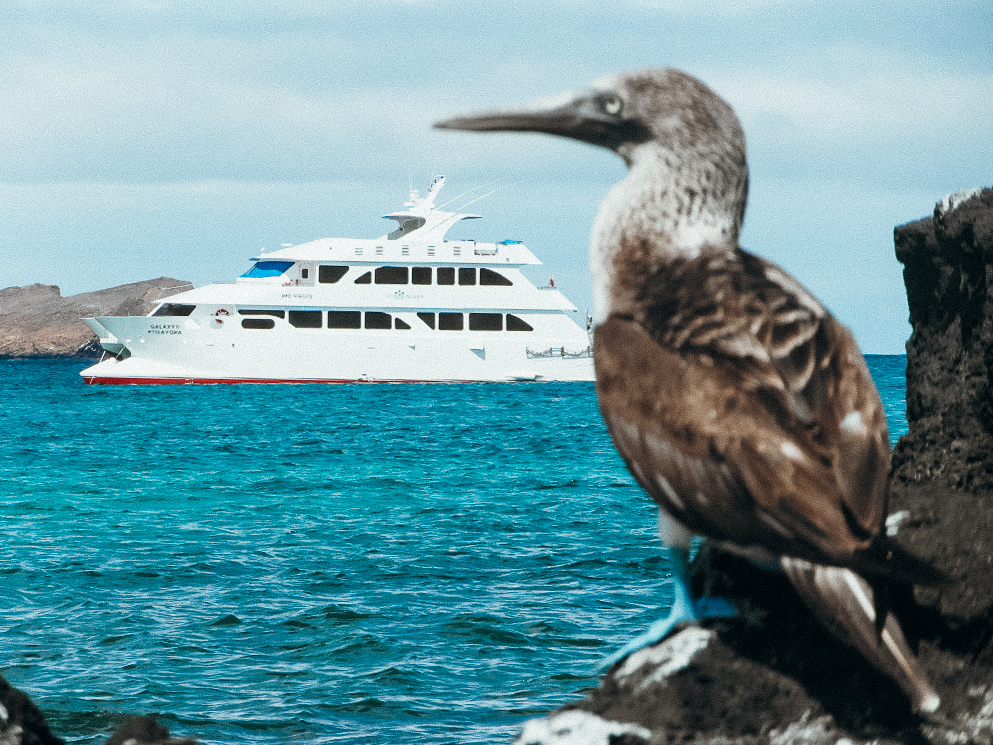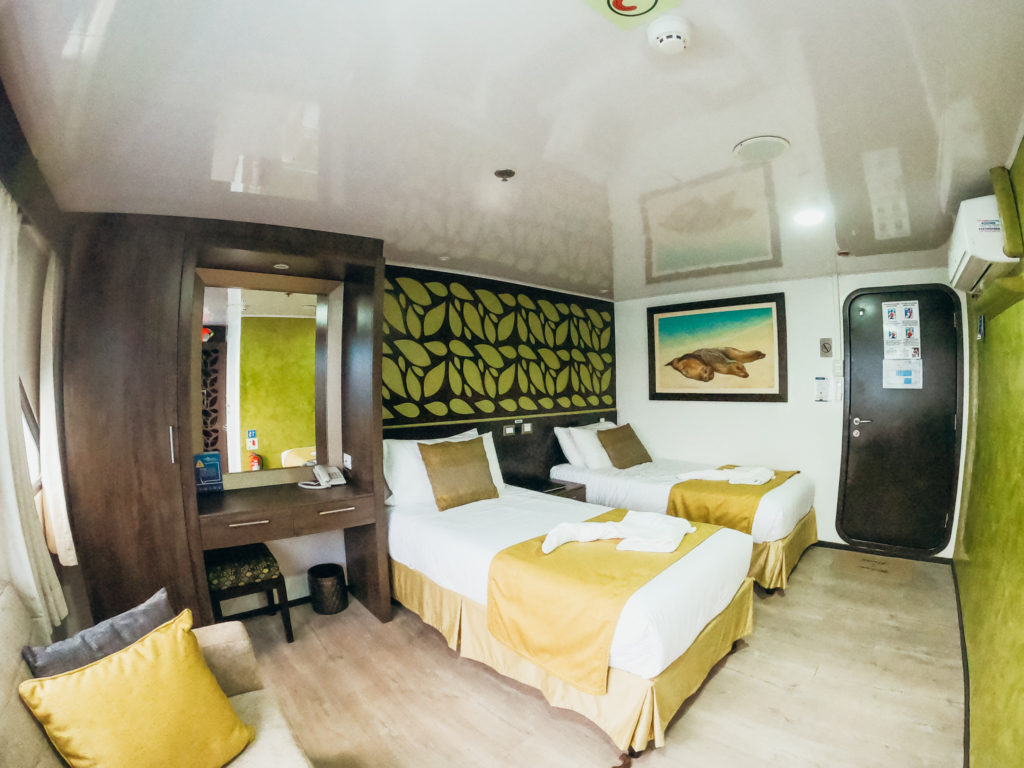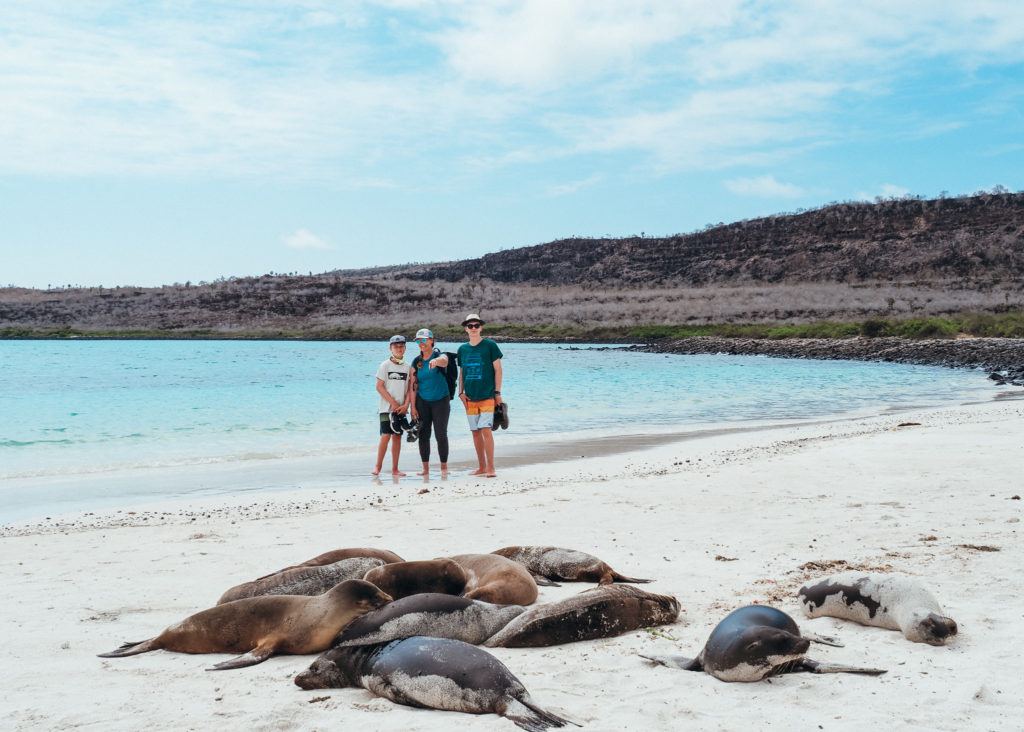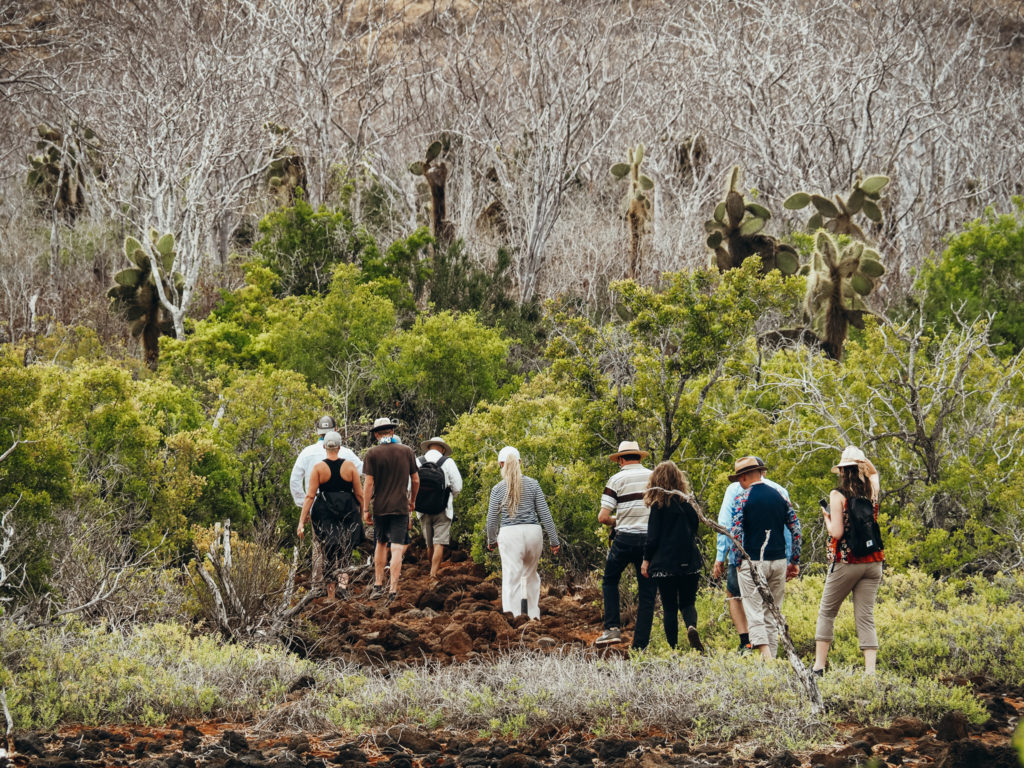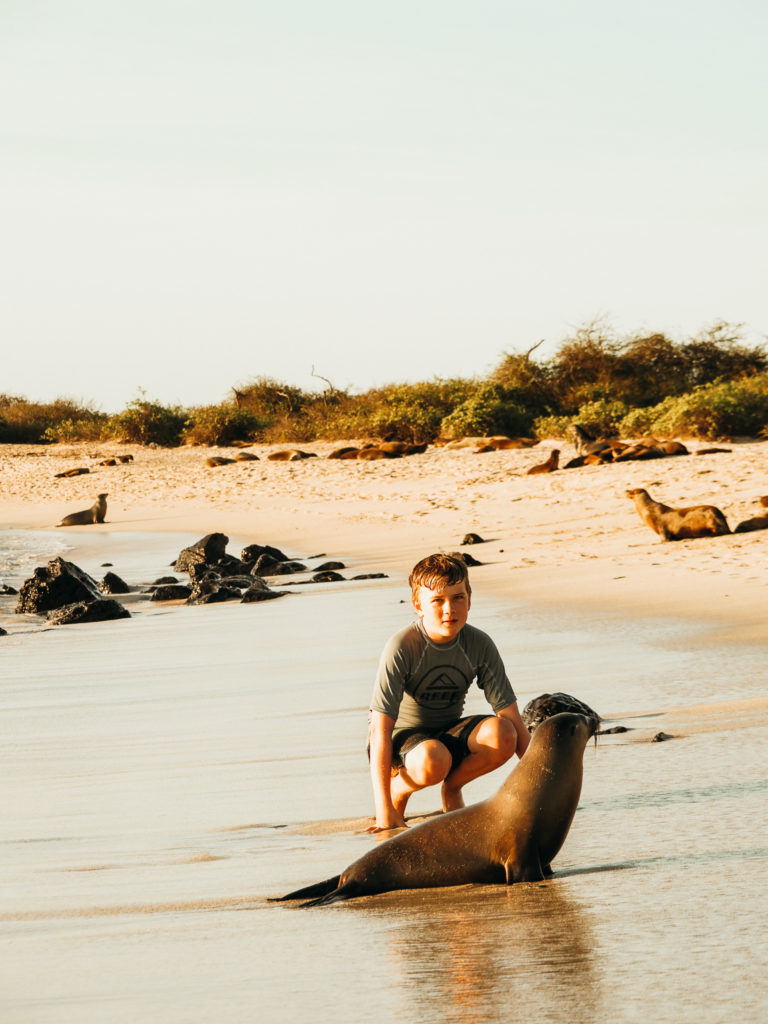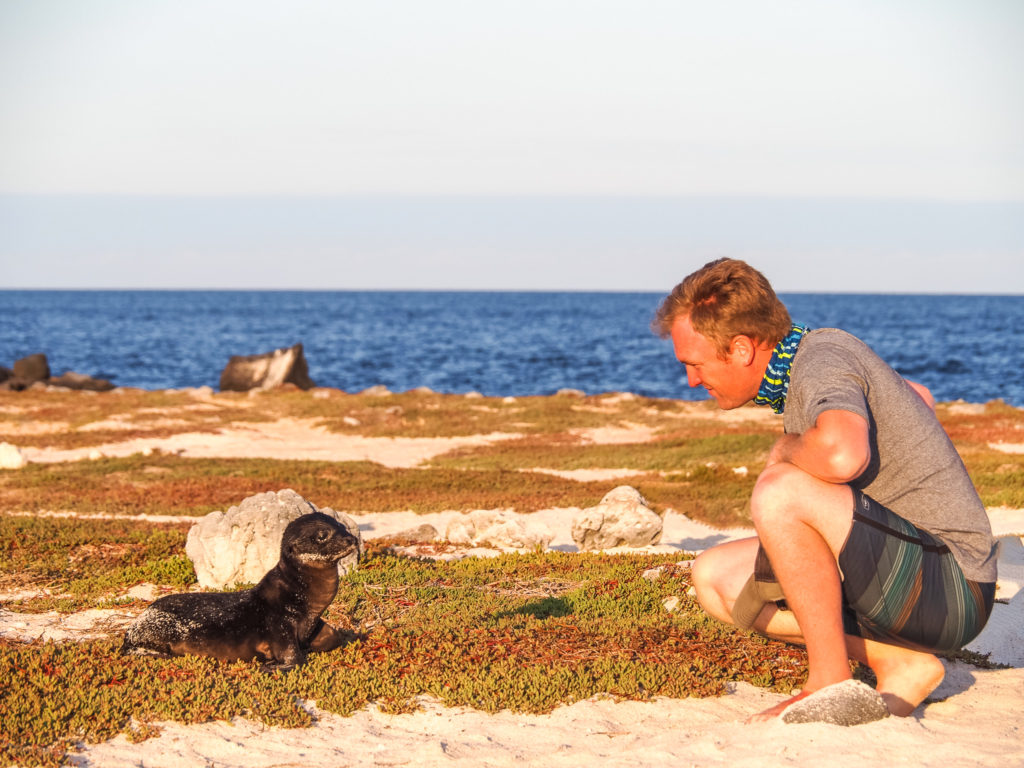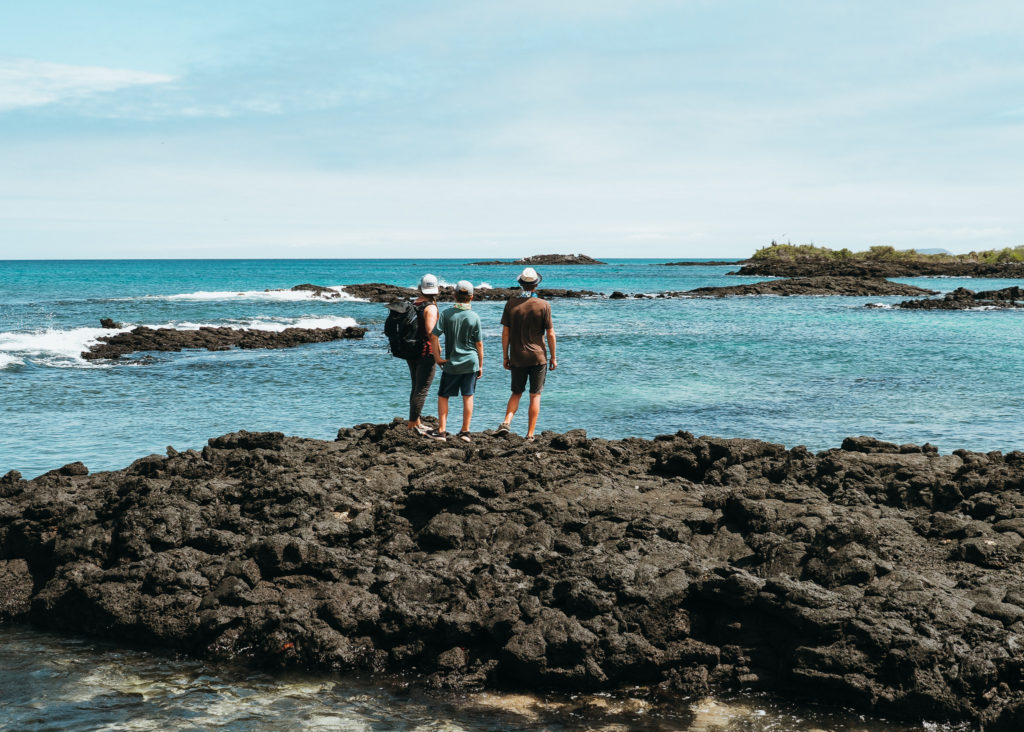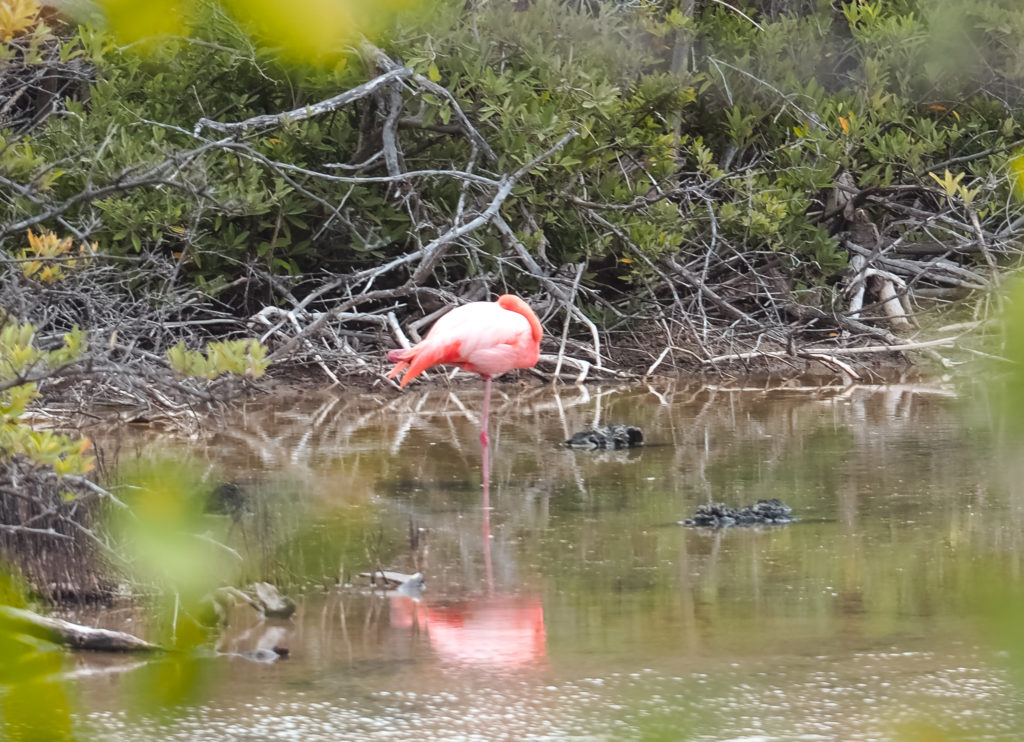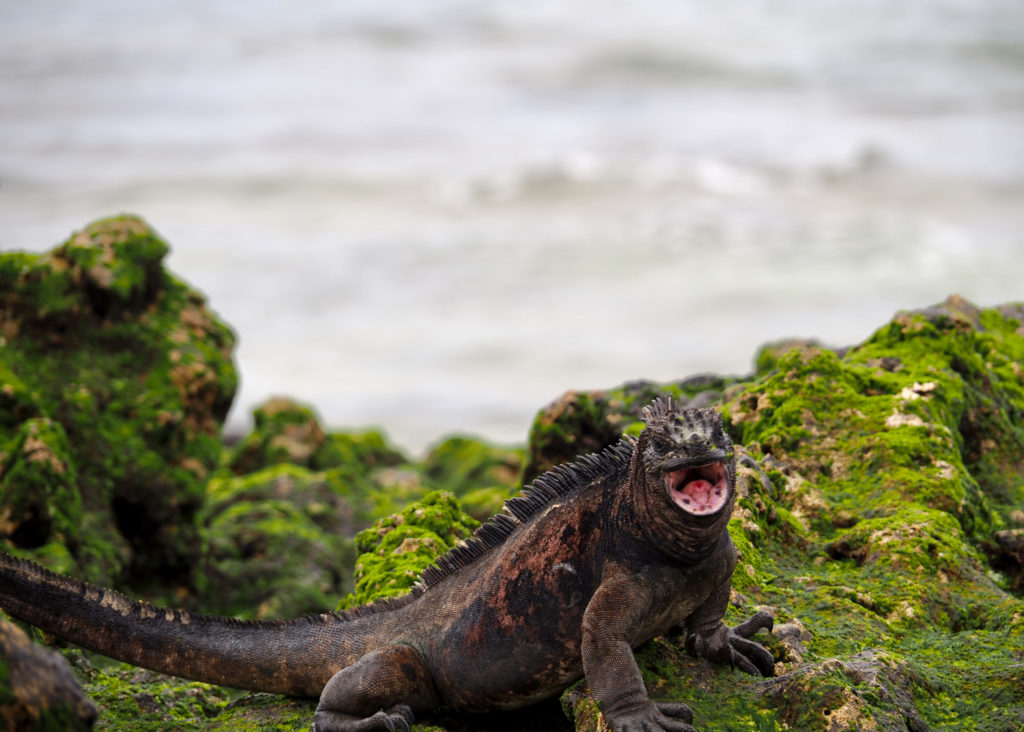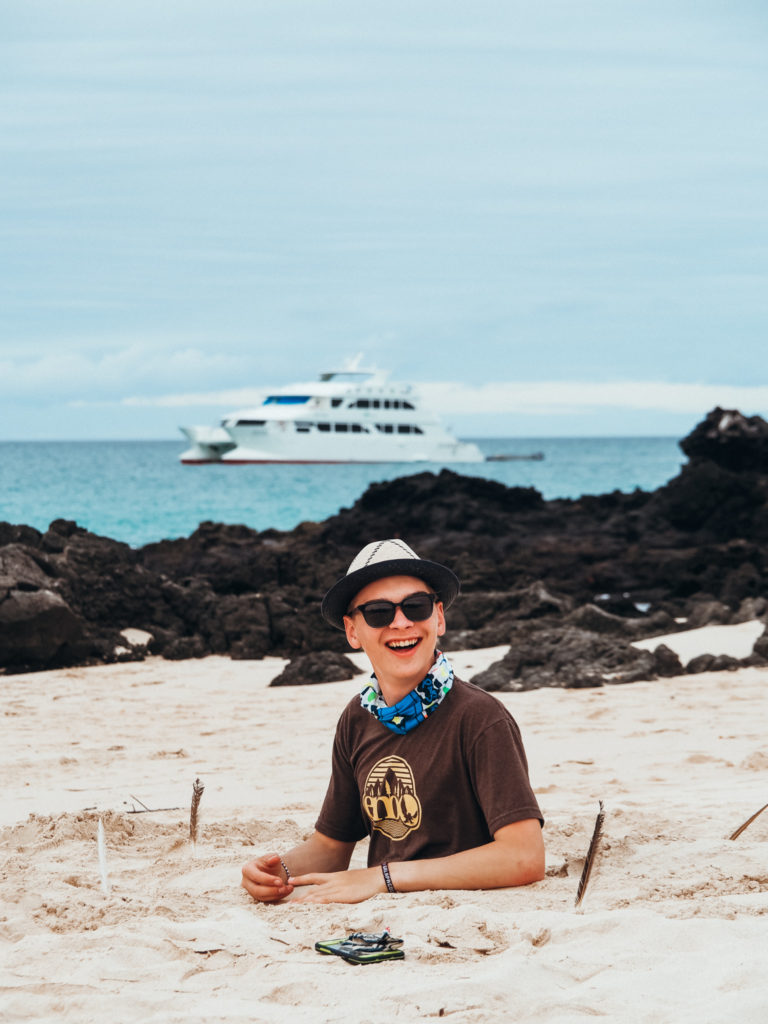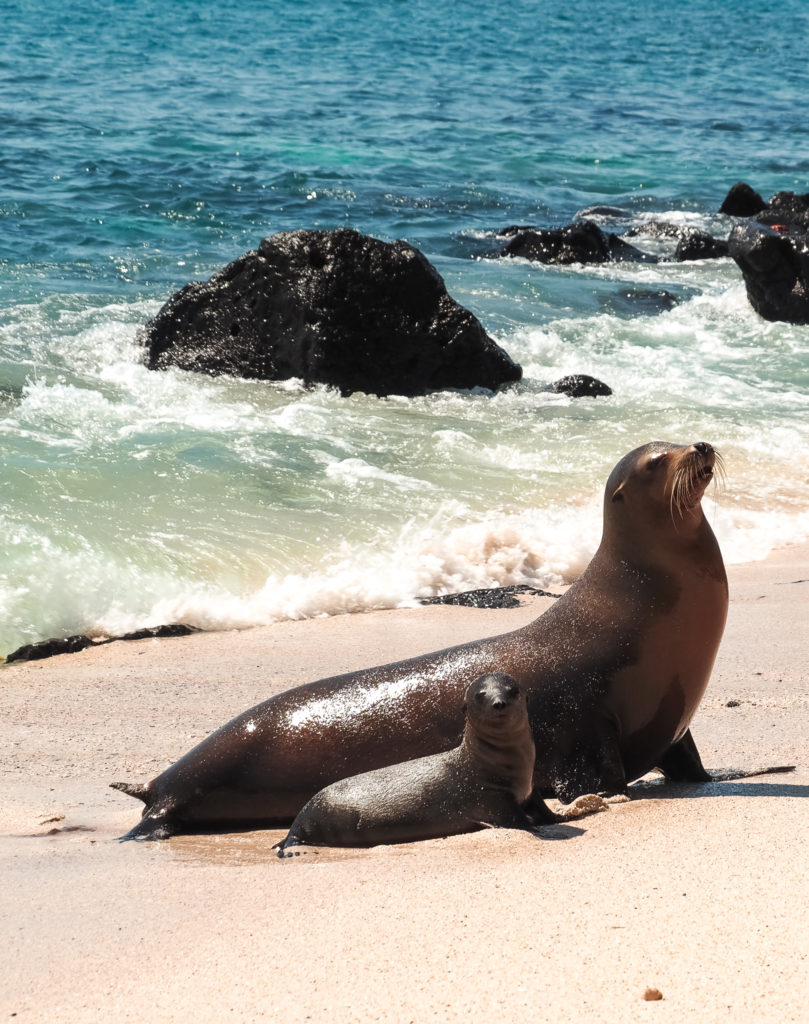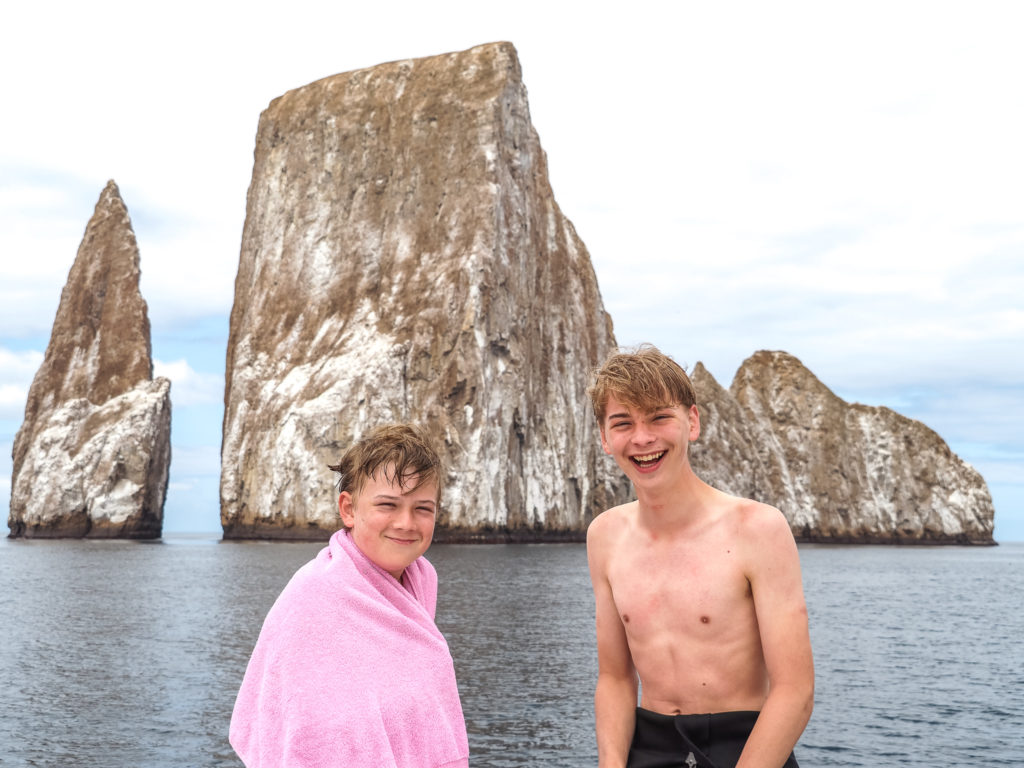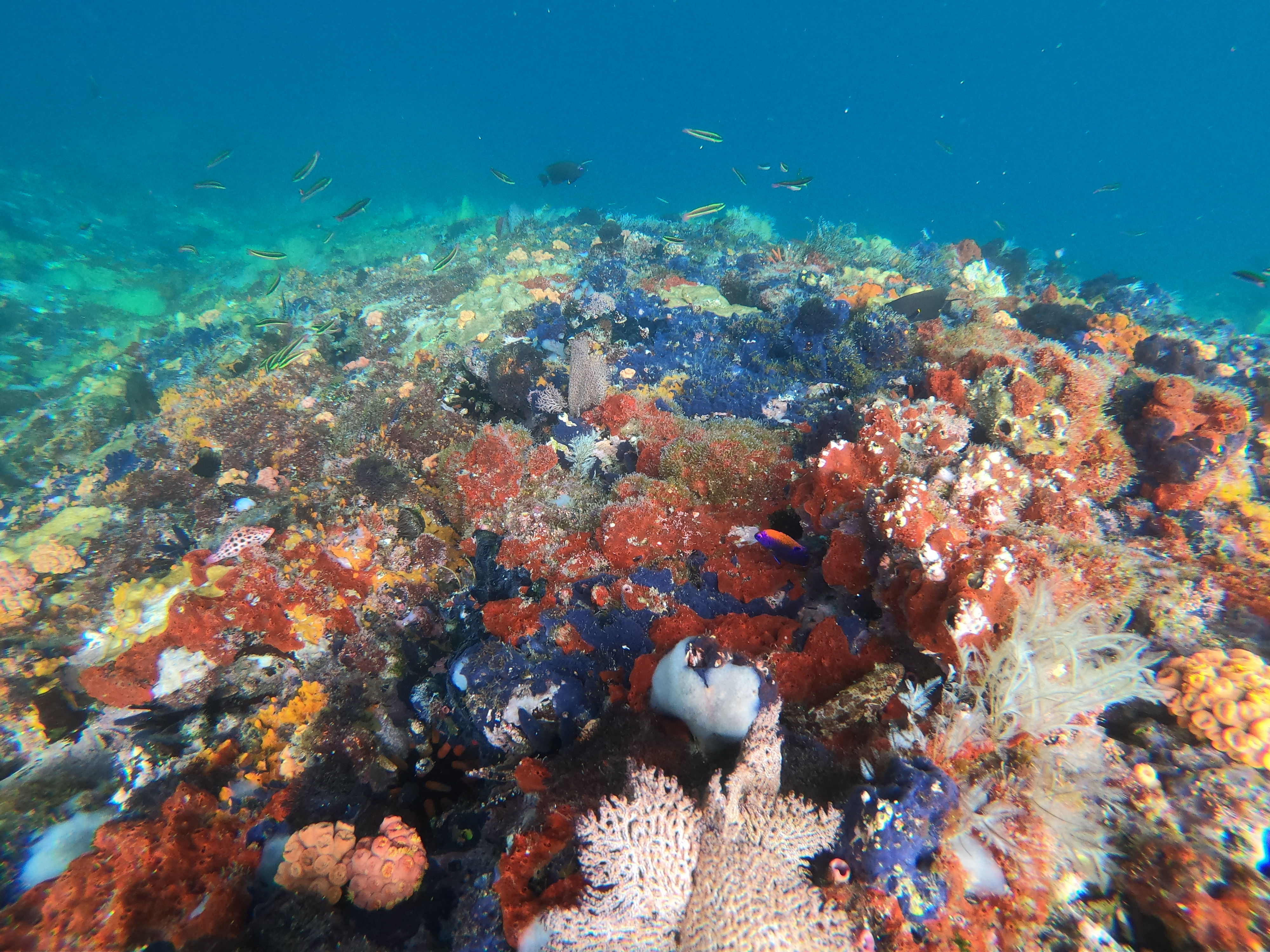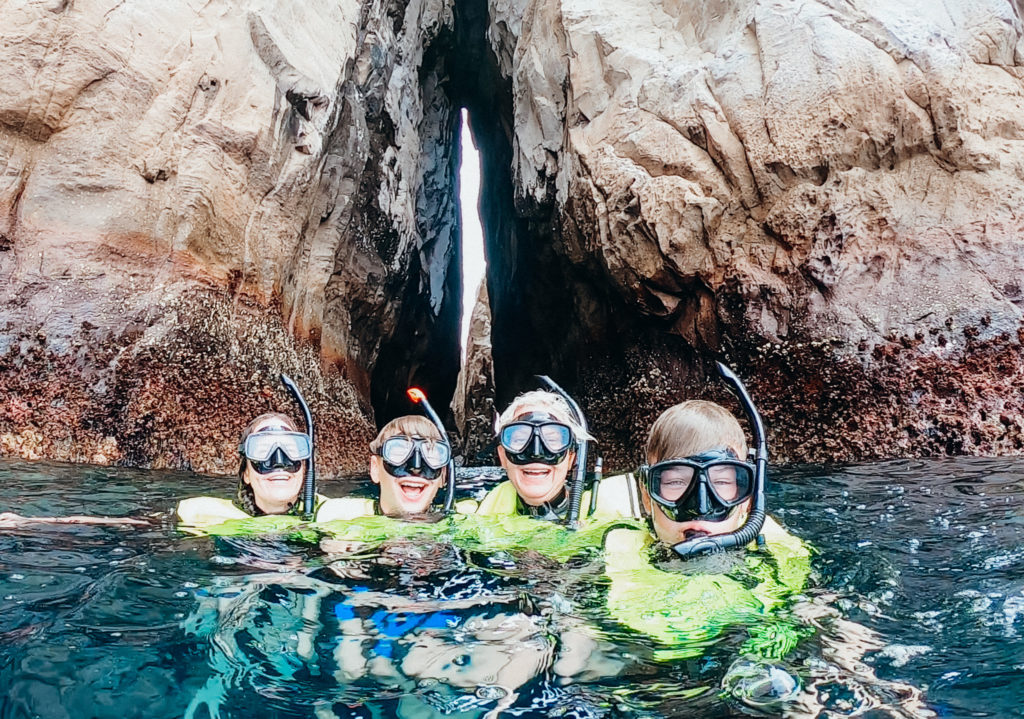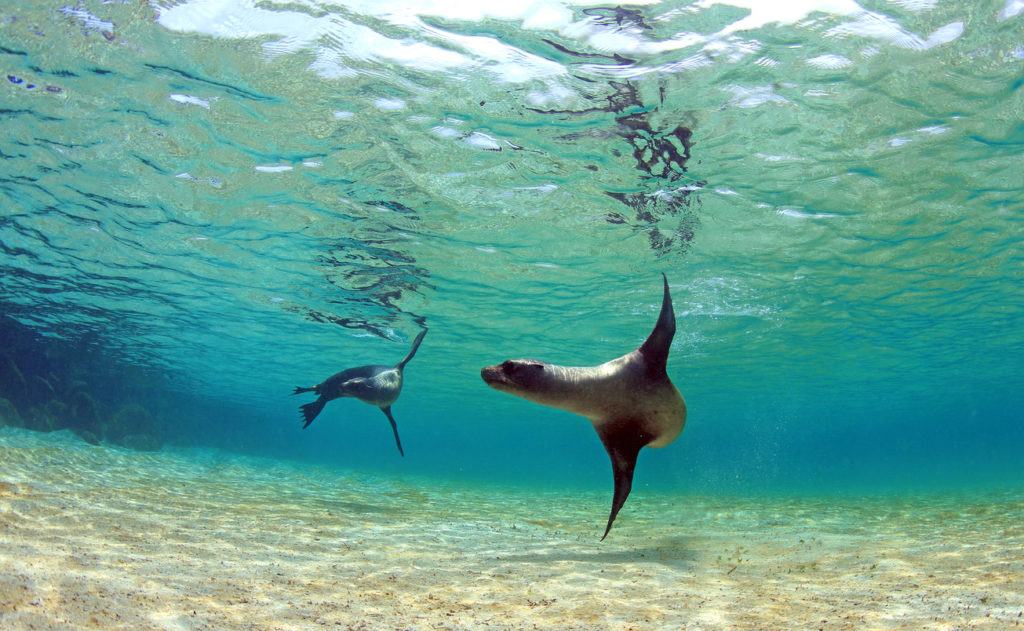The Galapagos Islands are revered as one of the most unique places in the world and rightfully so. This volcanic archipelago lies 1,000 km off the coast of Ecuador in the Pacific Ocean and is considered one of the world’s foremost destinations for wildlife-viewing. Its isolated terrain hosts a diversity of plant and animal species, many endemic or found nowhere else on Earth. That’s why the Galapagos Islands makes for the ultimate trip with kids and a bucketlist destination for world travelers, as well as nature and wildlife enthusiasts.
We recommend spending at least two weeks in Ecuador if you can, with one week in the Galapagos Islands and one week on the mainland. Check out our two week Ecuador itinerary. However if you want to spend more than one week in the Galapagos, this article includes an itinerary for 2 weeks in the islands.
Here you can swim with a large variety of marine species–from hammerhead and white tip reef sharks, to sea lions, to tropical fish, to dolphins, to sea turtles. The waters in the Galapagos are brimming with life. If snorkeling or diving isn’t your thing though, no need to worry! On land you can also view a variety of mammals, birds, and reptiles such as giant tortoises, marine iguanas, blue footed boobies and more.
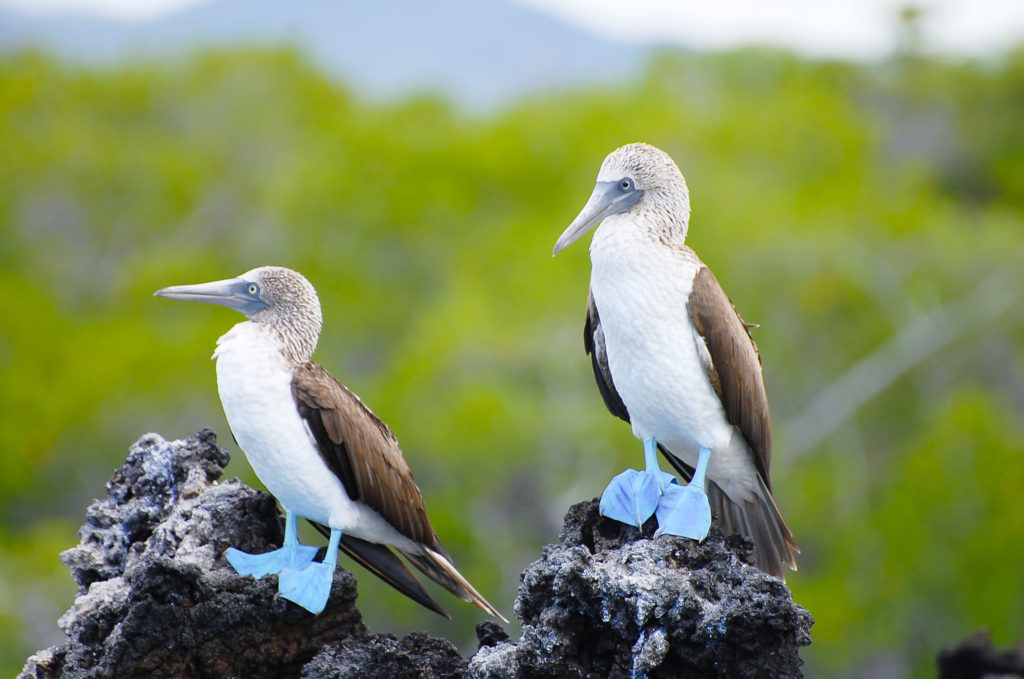
If you’re a big nature and wildlife lover, the Galapagos Islands will NOT disappoint. It is truly one of the most magical places we’ve ever been (and that’s saying a lot because we’ve been to a lot of amazing places!). The Galapagos is the perfect destination for families of all ages too–whether you have young or older children, you can find something for everyone to enjoy here.
When to Go to the Galapagos
The good news is there really isn’t a “bad” time of year to visit the Galapagos Islands. Wildlife sightings are plentiful all year. There are two main seasons in the Galapagos, cool and dry (June to November) and warm and wet (December to May). During the wet season it drizzles almost daily for a short period of time, however, ironically this is also the sunniest time of year. Ideally, the best time to visit the Galapagos Islands is from December to May if you want warmer, calmer seas and good underwater visibility.
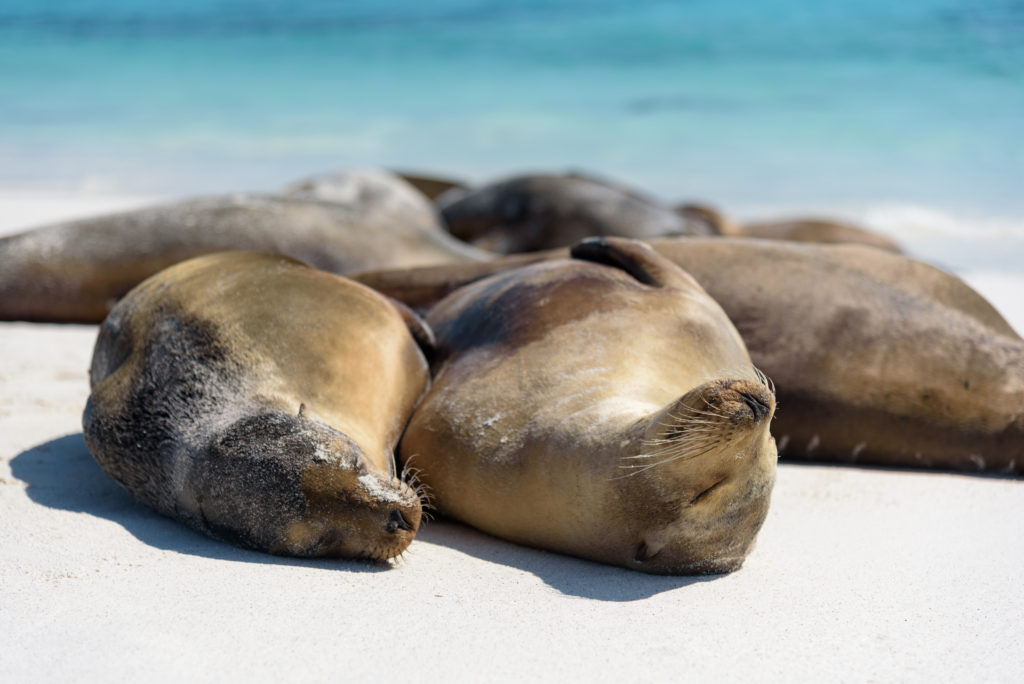
December to mid-January are considered peak tourism season. As you get further into the new year (and away from the winter holidays), booking a trip to the Galapagos will get easier and cheaper. Perhaps some of the cheapest months to visit are March and April when the rainfall is the heaviest. If you’re willing to tolerate some afternoon showers, the affordability will make it worth it! Crowds are lower this time of year and the water visibility is also the clearest if you crave underwater adventures.
In the Summer months (June-August), expect prices and tourism to pick up as this is a popular time for school holidays and vacations. These months make up the Galapagos’ second tourism peak, so planning months in advance is highly recommended for the sake of both prices and availability.
How to Get to the Galapagos
Unfortunately, there are no direct flights to the Galapagos from any country in the world (except Ecuador). Getting to the Galapagos takes a bit of careful planning and time. In order to get to the islands, you must pass through one of Ecuador’s two main international airports, Quito or Guayaquil. From there, it is roughly a 2-3 hour flight to the Galapagos.
(*Side note: Quito tends to be a little cheaper, however Guayaquil is closer and many flights from Quito stop in Guayaquil en route to the Galapagos.)
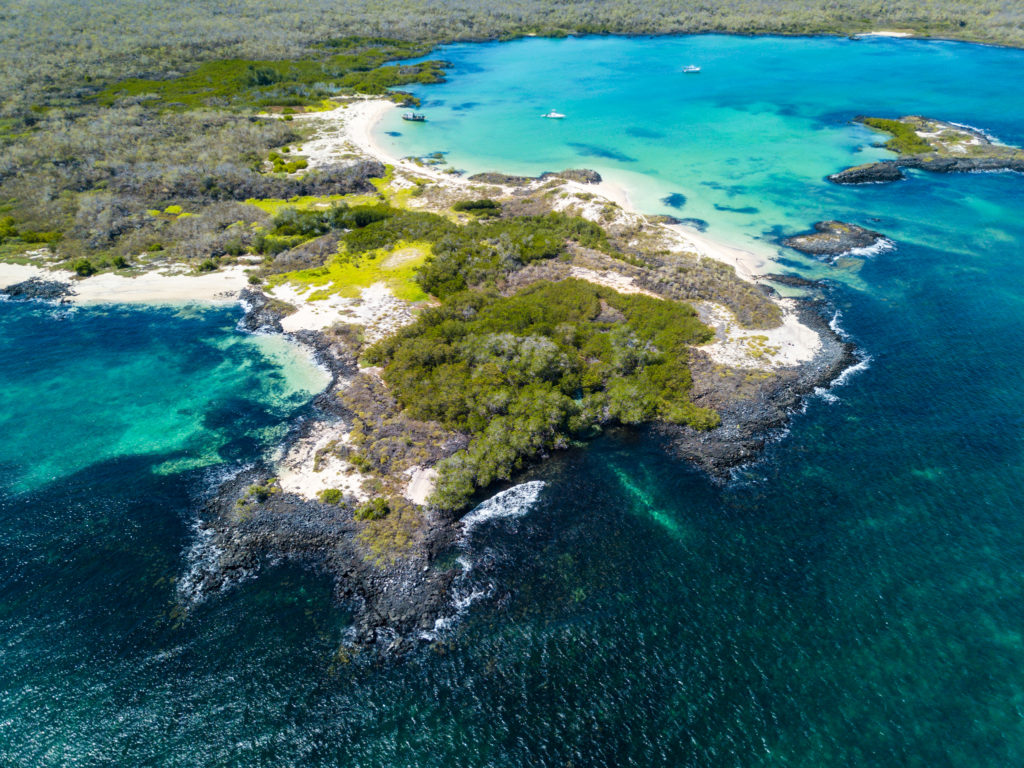
There are two airports on the islands, one in Baltra (the main one) and another on San Cristobal (Puerto Baquerizo Moreno). Most tourists fly into Baltra which is adjacent to Santa Cruz (a short 5 min ferry), the most popular tourist hub in the Galapagos Islands. Another reason Baltra is the go-to airport is because if you are going on a cruise, this is where you would start. You can book tickets through domestic airlines with LAN or Avianca. We use Sky Scanner and Momondo for finding the best deals on flights.
Flights to the Galapagos Islands from mainland Ecuador can range as low as $200 RT to more than $500 RT per person. It really just depends on the time of year you go and when you book your flights. Also, if you plan to visit both Santa Cruz and San Cristobal, book your flights into one airport (Baltra), but return from the Puerto Baquerizo Moreno airport on San Cristobal (or vice versa). This saves you time, money and a ferry back to Santa Cruz from San Cristobal and then a taxi and another ferry to Baltra. This is what we did and we are so glad we made that choice.
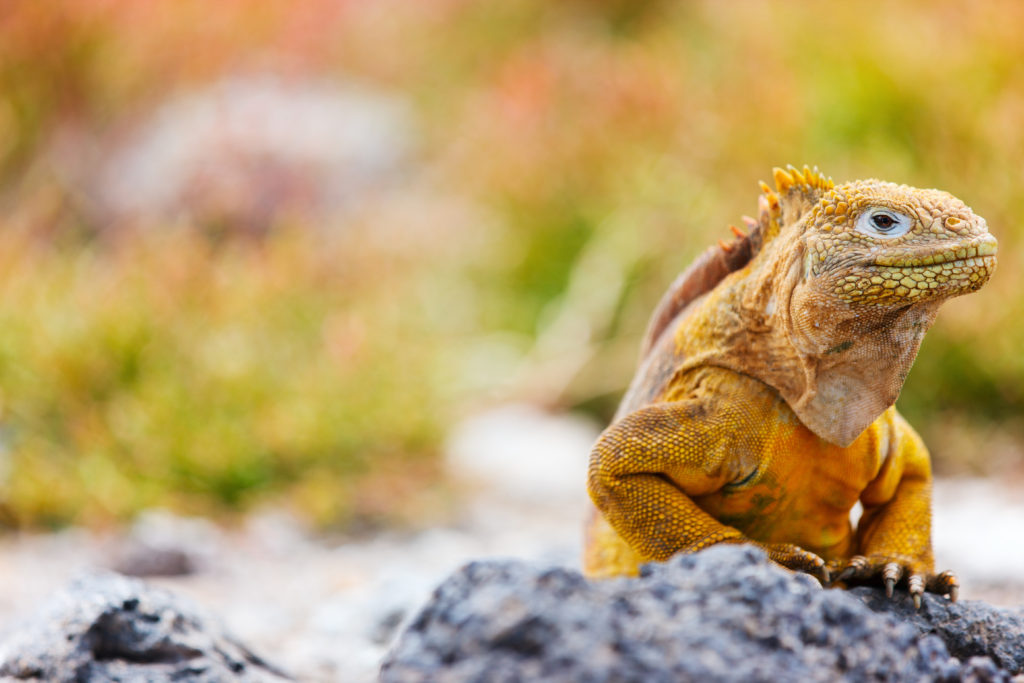
Where to Go
One of the hardest decisions when planning a trip to the Galapagos Islands is where to go. There are 3 main inhabited islands in the Galapagos that you can stay on–Santa Cruz, San Cristobal and Isabela. And then there’s also the option of “cruising” if you want to explore uninhabited islands and get off-the-beaten-path. After doing a lot of research and talking to both travelers who had visited the Galapagos many times, as well as locals, we decided that the best way to really experience these islands was by land and by sea.
If your budget and time allows it, we HIGHLY recommend doing a small cruise with Galagents Galapagos Cruises (more on that later) and then spending some time on one or more of the islands before or after your cruise. If you only have 1 week (7 days) in the Galapagos Islands, we would suggest doing one or the other–a cruise OR staying on two different islands. However, if you have 10 or more days in the Galapagos, we would recommend doing both (which is what we did).

Santa Cruz
As mentioned previously, Santa Cruz is the main tourist hub, as well as the most populated island in the Galapagos. Puerto Ayora is the port city on the island where the largest variety of hotels, restaurants, tour companies and shops are located. It is also where you catch the ferry to San Cristobal or Isabella if you are island hopping. There are plenty of activities and places of interest on Santa Cruz, most notably the Charles Darwin Center, Fish Market, El Chato Tortoise Reserve, Tortuga Bay, and others. More on those later.
If you’re looking for ease of access, lodging options for every budget, and a variety of activities and interesting, natural places to explore, Santa Cruz might be your best bet. Here you have the biggest variety of accommodations ranging from hostels, B & B lodges, high-end hotels and resorts, as well as Airbnb’s. Our top choice in Santa Cruz is the Royal Palm Hotel, located in the highlands away from the hustle and bustle of Puerto Ayora. It is peaceful and beautiful, private and spacious, and offers great amenities for nature lovers and people who want to get away from it all.
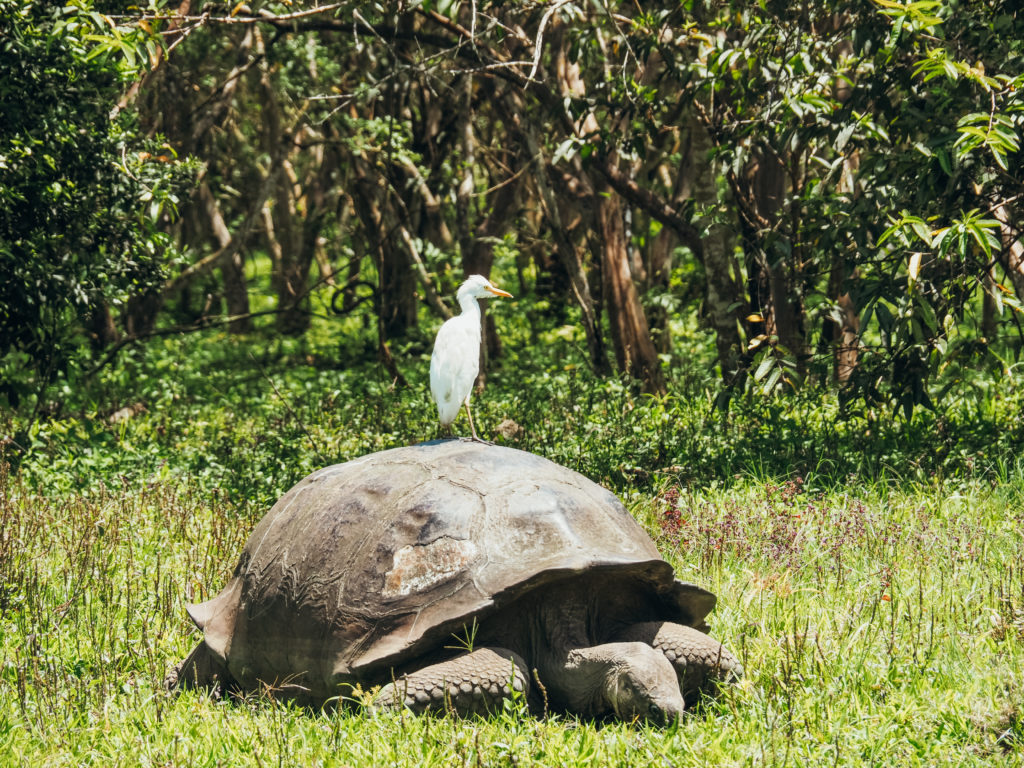
San Cristobal
A 2 hour ferry ride (or a short puddle jumper flight) from Puerto Ayora lies San Cristobal, the easternmost island in the Galapagos archipelago, as well as one of the oldest geologically. The biggest draw to this island is the famous Kicker Rock (one of the premier scuba dive and snorkeling spots in all of the Galapagos), Isla Lobos, Cerro Brujo and El Junco Lagoon. It is also the only island in the Galapagos where you can find three different species of booby birds and home to another tortoise breeding center, La Galapaguera.
San Cristobal also hosts the Interpretation Center which far exceeds the more popular Charles Darwin Research Station on Santa Cruz. Lastly, if you love to surf, San Cristobal is probably your best option for awesome surfing, Namely the beach of La Loberia. We used Booking.com to find lodging here and loved staying in Cactus Hotel. Very affordable, clean, friendly and helpful staff, and right in the main town!

Isabela
Isabela is the one island we were hoping to visit while in the Galapagos, but due to the logistics and timing of getting there from Santa Cruz, it didn’t work out. Many locals told us that Isabela was their favorite island and for good reason: it is the most unspoiled of all the inhabited islands. It is also the largest and the most volcanic of all the islands!
Despite being the largest island by area, Isabela is home to just over 2,000 residents, but that’s what makes it the ultimate Galapagos paradise, where nature and wildlife dominate the landscape! Due to its location, Isla Isabela is not always visited on Galapagos cruises or included in Galapagos tour itineraries, making it a bit more isolated and remote.
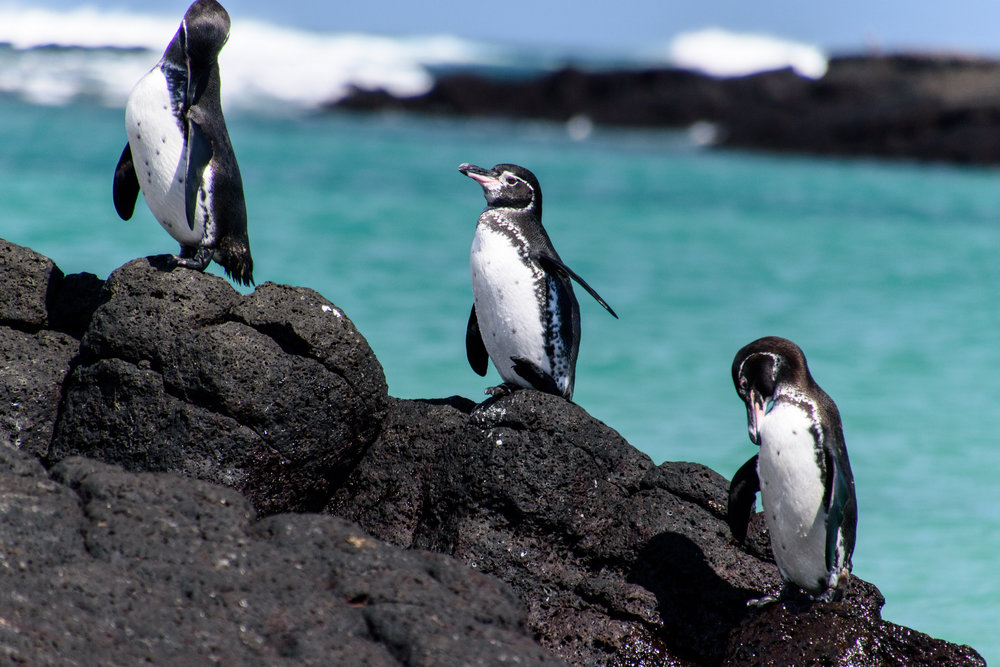
Some highlights of Isabella include seeing penguins and other wildlife at Las Tintoreras, Los Tuneles (a premiere snorkeling destination on the island), Cerro Negro volcano and others. With less accommodation options on Isabela compared with Santa Cruz or even San Cristobal, you might spend a little more money, however there are still plenty of hotels to choose from for every budget on booking.com.
We would personally recommend staying at Flip Flop House or the Isabela Beach House, both in Puerto Villamil. To get to the island of Isabela, one must either take a small puddle jumper flight or take the ferry from Puerto Ayora (the cheaper option), both on Santa Cruz.
What to Budget + Other Helpful Tips
One of the biggest questions people ask when it comes to planning a trip to the Galapagos is, “How much will it cost?” While that is a difficult question to answer, a trip to the Galapagos really depends on several factors (time of year, flights to Ecuador from different countries around the world, type of lodging, cruise or no cruise, etc), we would say plan on budgeting at least $2K per person (for a mid-range price trip).

You’re probably thinking, “Wow! That’s expensive!” But the fact of the matter is, the Galapagos Islands isn’t exactly known as a budget-friendly destination. And that’s mostly due to the fact that just getting here isn’t cheap. Flights from the States will cost at least $500 RT and that doesn’t include the flight from mainland Ecuador to the Galapagos. And then you have mandatory entrance fees (see below), which add up to $120/person.
So in reality, the cost of entering and leaving the Galapagos could be close to $1,000. Then you have to factor in accommodations, transportation around the islands (taxi, ferry etc), food, activities, and/or perhaps a cruise.
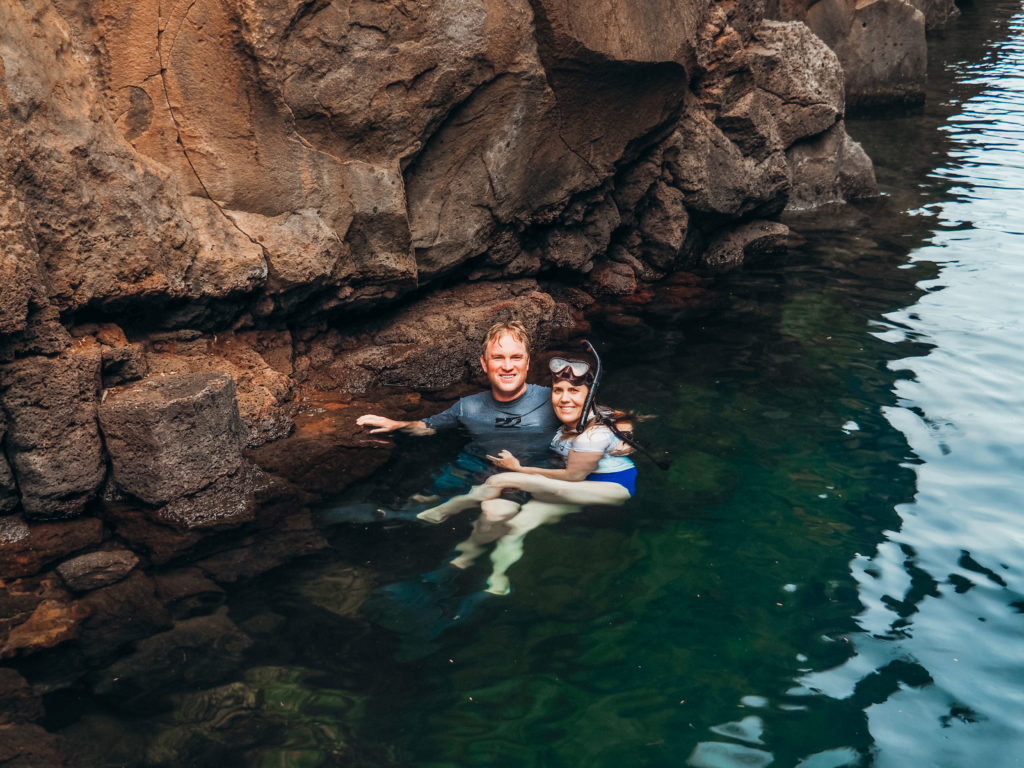
Now there are ways to make a trip to the Galapagos cheaper. For example, stay in hostels, or rent a modest Airbnb and cook your own meals. There are also plenty of FREE or nearly free activities to do on the islands, like go to the beach. However, anything inside the national park requires a guide and if you want to do any excursions to snorkeling spots away from the beaches or to other islands, that will also require a guide and added fee.
Now if you choose to go on a cruise, that could cost more unless you are only going to the Galapagos for a cruise and not spending any extra time on the islands. Cruises also range greatly in price from as low as $1,000 per person up to thousands for some luxury yachts and ships. With Galagents Galapagos Cruises, they offer the whole range of pricing options from budget up to luxury. Keep in mind that cruises cover ALL of your meals, a guide, excursions, equipment (such as snorkel), etc.
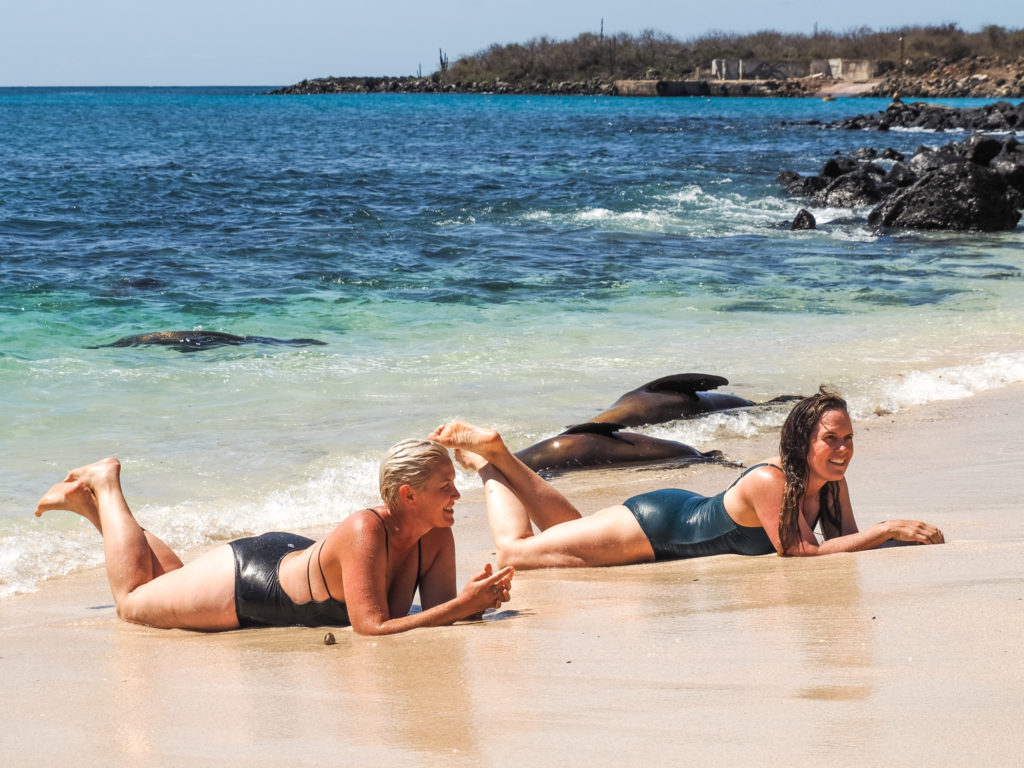
Ok, now let’s talk about entrance fees. When you enter the Galapagos Islands, there are two mandatory fees that all tourists must pay. These fees largely help cover efforts by the Ecuadorian government to preserve and protect the islands from humans harming its fragile ecosystem. The first fee is called the TCC or Transit Control Card which is $20/person. Visitors must pay this fee at a booth in the airport (Quito or Guayaquil) with their plane tickets to get the card (cash only).
The second fee is the Galapagos National Park entrance fee of $100/person. The amount of this fee depends on the age and nationality of the tourist. Most foreign tourists over the age of 12 pay $100, while children pay $50. Although an extra $100 may seem like a lot of money, rest assured that the fee is for an indispensable cause. By visiting the islands, you are also contributing to the conservation efforts protecting the enchanting Galapagos Islands.
*Note: If you are traveling to the Galapagos during Covid times, it’s important to know that Ecuador is following every precaution and biosecurity measure to ensure tourists and locals stay safe. You can read all about Covid requirements to travel to Ecuador and the Galapagos here or here.
Ultimate Galapagos Trip With Kids

Keep in mind that the ultimate 14 day Galapagos trip with kids itinerary includes time on 2 different islands, plus a 5 day cruise. This itinerary can be adjusted to suit your needs. For example, if you decide not to do a cruise, you can shorten your stay to 7 days or choose to visit some of the islands longer. Alternatively, if you only wanted to do one week in the Galapagos and one week on the mainland of Ecuador to visit places like the Amazon, or the Andes, check out our two week Ecuador itinerary.
Day 1-3: Santa Cruz
Assuming that your flight arrives in Baltra, you will spend the next 3 days on the island of Santa Cruz. Since Baltra is on a small island adjacent to Santa Cruz, once you leave the airport you will need to take the shuttle bus or a taxi to the port to catch the ferry. Or if your hotel provides a shuttle, arrange that with them. The ferry ride to Santa Cruz is only 5 minutes.
We mentioned earlier that our top choice for accommodations on the island of Santa Cruz is the Royal Palm Galapagos Hotel. It is located in the beautiful highlands of Santa Cruz on almost 200 acres of forest overlooking the valley and ocean. The Royal Palm mainly consists of private villas of different sizes to accommodate couples or families.
All your meals are included with your stay at the Royal Palm, and the food is delicious! The staff goes above and beyond to give you the “royal” treatment and ensure that every need is catered to. There is a pool and outdoor shower and the grounds are beautifully landscaped. One of the things we loved most about the Royal Palm was all the walking trails! Each villa has full privacy and incredible views, especially of the sunset every night. The Royal Palm is truly a garden oasis and the best part is it is moderately priced too.
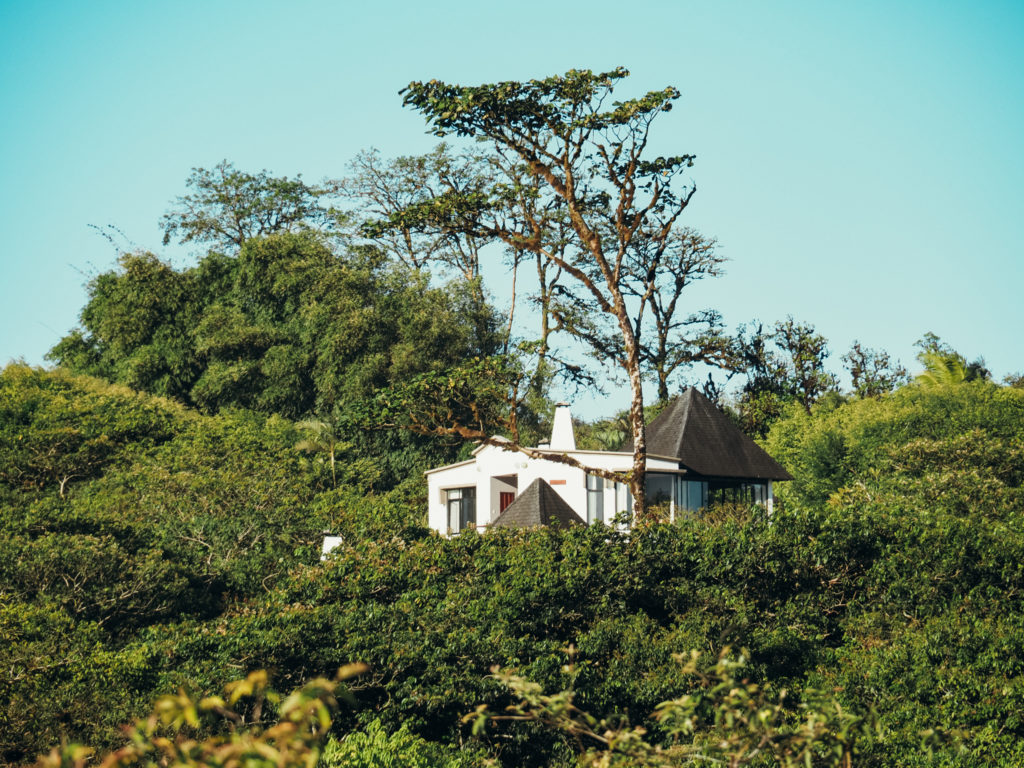
We also love that Royal Palm strives for sustainability practices to ensure they make the lowest impact on the environment. Another bonus of staying at the Royal Palm is their property boasts the largest lava tunnels in all of the Galapagos! A staff member can provide a guide (along with safety equipment) and take you through the lava tunnel which is quite the adventure! You can’t miss it!
In addition, Royal Palm is located near two giant craters and a giant tortoise reserve, which make a perfect destination if you love nature, tranquility and scenic vistas. And when you want to go to Puerto Ayora, it’s only a 25 min drive by taxi into town.
With only 3 days in Santa Cruz, you don’t have a lot of time to see ALL of the highlights of this island, but you can definitely see some of the best spots of Santa Cruz in just a few days. We would recommend spending one full day biking to El Chato Tortoise Reserve (or hiring a taxi), and checking out the lava tunnels and craters on the island. We loved biking from Royal Palm to El Chato (they provide bikes and helmets) because it was mostly downhill! Once at the tortoise reserve, we spent at least 2 hours walking the trails spotting dozens of giant tortoises. We even saw some mating!
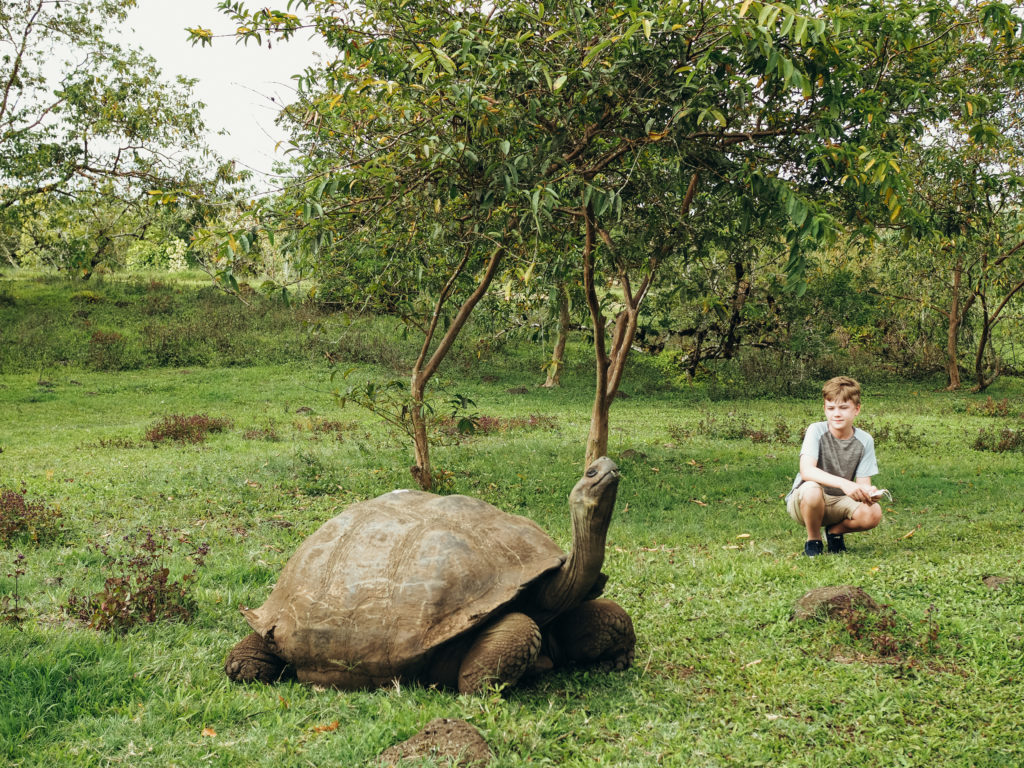
We would suggest not rushing through this reserve as it is very beautiful and fascinating to watch the tortoises in their natural habitat. The owner of the reserve was very informative and helpful. We learned a lot about these incredible creatures that can live over 200 years old and weigh up to 700 lbs. El Chato Reserve is a great place to take kids and a definite must when you come to the Galapagos! And if you have the time, make sure to visit Pit Craters and Los Gemelos craters which are near El Chato Reserve. The best part about all of these activities is they are cheap or free!
Another day while on Santa Cruz, plan on spending most (if not all) of the day at Tortuga Bay. It’s probably the most famous beach on the whole island and for good reason–it’s insanely gorgeous and offers a little of everything for beach and nature lovers. Here you will see plenty of wildlife such as marine iguanas, birds, sea turtles, rays, and even sharks! (Yes, we saw dozens of white tip reef sharks while snorkeling.)
To get to Tortuga Bay, you will need to go towards Puerto Ayora as this beach is close to the port city. Once there (you can take a taxi), it’s about a 1.5 hike from the road to the beach. Unfortunately, there is no parking right at the beach, but it is worth the hike! (*Tip: Bring plenty of water, food, towels and sunblock as there are no food vendors on the beach.)
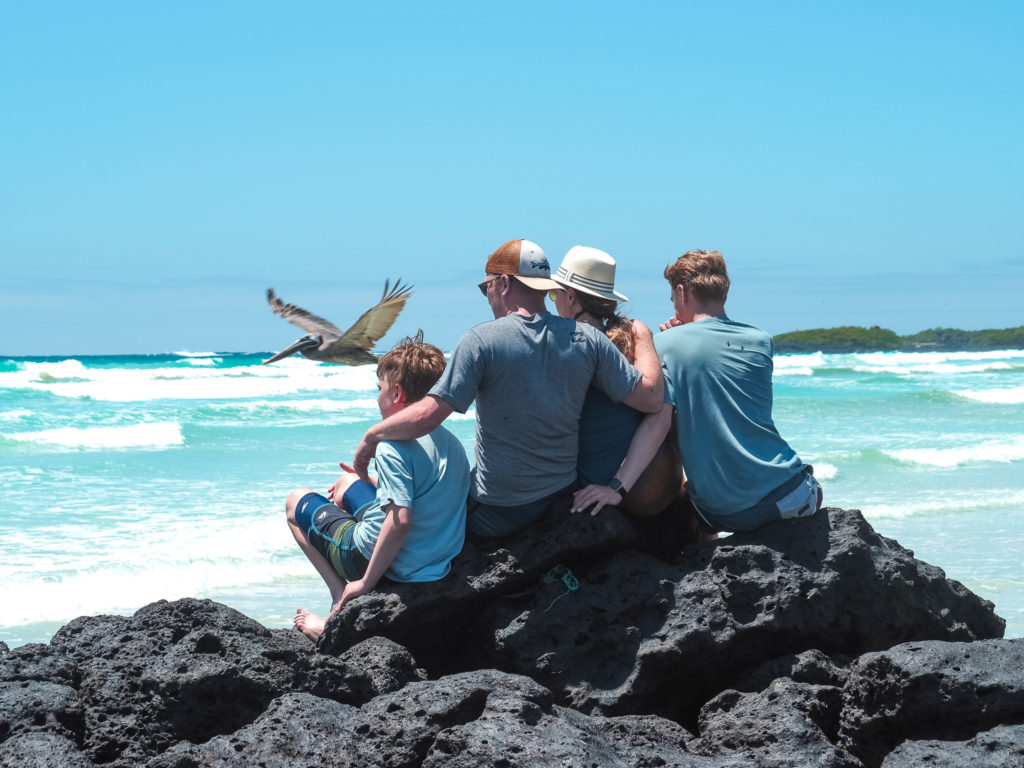
Once you arrive to Tortuga Bay, there are two beaches here. First is Playa Brava, the surf beach (best for more advanced surfers) and then Playa Mansa, which is protected and calm. To get to Playa Mansa, simply walk all the way across the main beach past the rocks until you reach the other beach. Mansa is beautiful too–turquoise green waters and white sand. There is more shade at this beach under the trees, and you can also rent kayaks and snorkeling equipment. The snorkeling here is amazing!
On the last day in Santa Cruz, we would suggest doing a few things around Puerto Ayora such as visiting the Charles Darwin Center, the Fish Market, snorkeling at Las Grietas, and if you have time, swimming at Laguna de las Ninfas. The Charles Darwin Center was founded in 1959 and dedicated to the preservation and conservation of the Galapagos Islands and the animals and plants that live there. It’s named after the famed British naturalist who visited the islands in 1835 and later made the Islands famous by using the Galapagos finches to illustrate his Theory of Evolution.
They have many projects going on at any given time, and it’s a very interesting and educational place to visit on Santa Cruz, especially with kids. Another must near Puerto Ayora is Las Grietas, a well-known local favorite spot for snorkeling. Las Grietas is a fissure in lava rocks that has created a series of narrow crevices filled with crystal clear water.
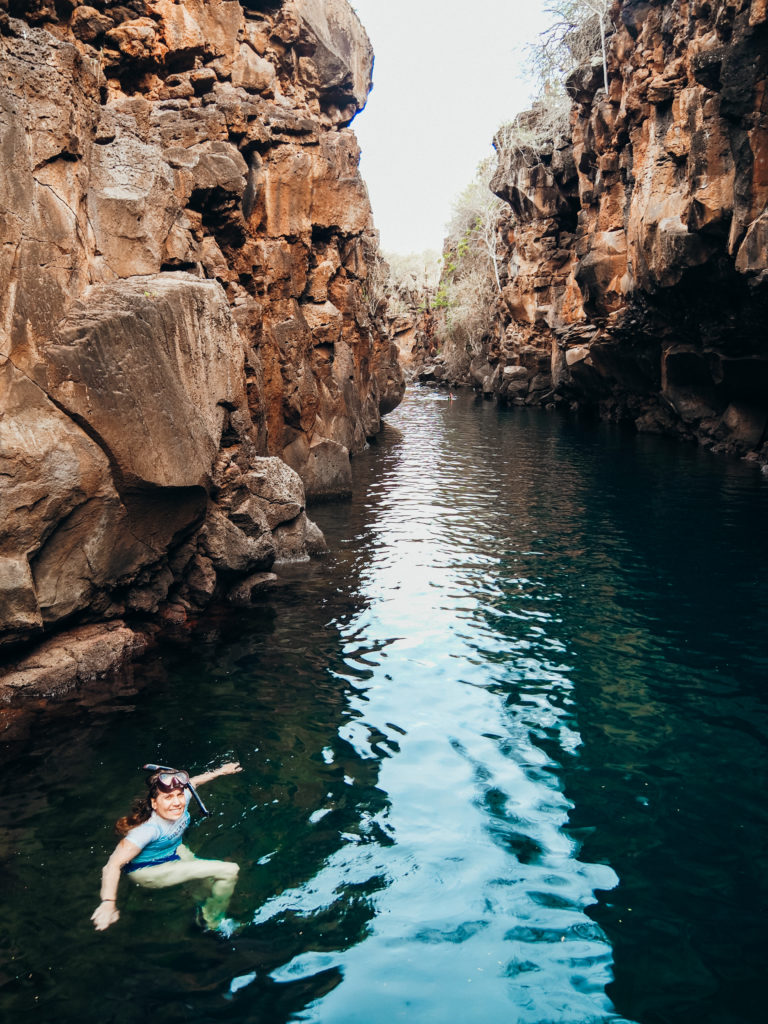
The water at Las Grietas is a mix of seawater that enters from one end, and freshwater that filters in from the other. The protected walls mean that the water is very calm, perfect for a relaxing swim. There is not much marine life to spot here, but there are plenty of other Galapagos wildlife along the path. Don’t miss the lookout or “mirador” along the trail that looks out over Academy Bay either–breathtaking!
If you end up spending more time on the island of Santa Cruz, there are a few more points of interest or activities/excursions we would highly recommend. If you are a beach lover, go to Playa El Garrapatero (there are flamingos!) or Las Bachas, another beautiful beach on the island. If you love snorkeling or diving, book a day trip to Gordon Rocks, one of the premiere spots to see hammerhead sharks and other marine life in the Galapagos. Another day trip option is to Island Bartolome, where you are likely to see penguins, sea lions, white-tipped reef sharks, and more.
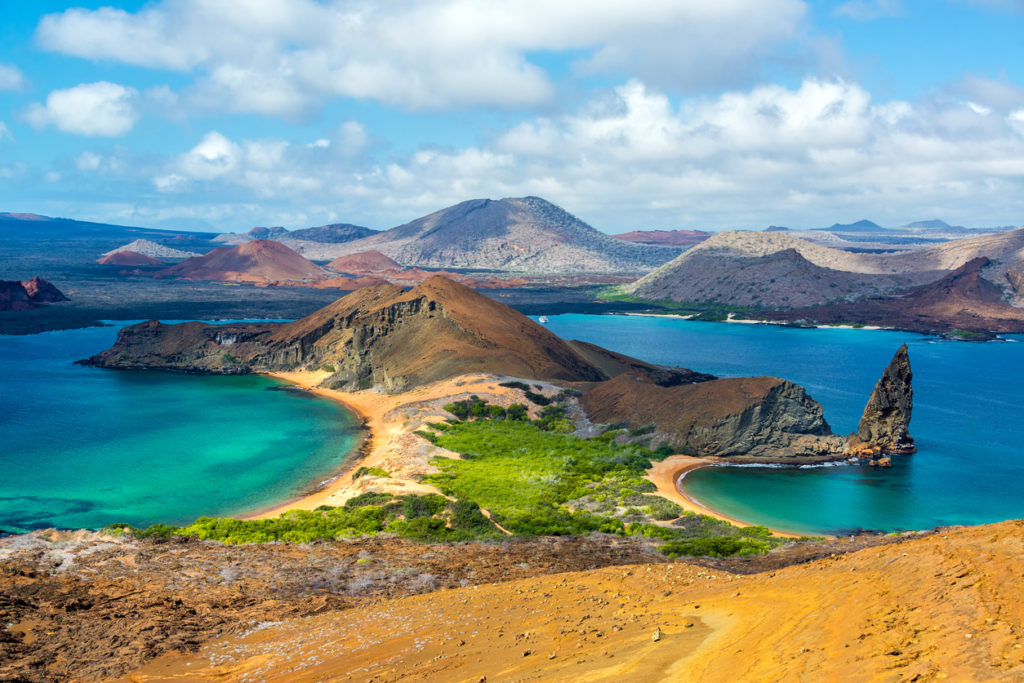
Day 4-9: Galapagos Cruise
We personally loved spending a few days on Santa Cruz before our cruise and then another few days on another island after the cruise, however you might plan your itinerary different to suit your needs (for example, choose to cruise first). As mentioned earlier, we booked our cruise through Galagents Galapagos Cruises, one of the top cruise operators in the islands. We went on the Eco Galaxy catamaran and honestly, we couldn’t recommend it enough. It was the absolutely the highlight of our entire trip to the Galapagos!
One reason we chose to cruise with Galagents is the fact that they are committed to environmentally- friendly practices. In fact, the owners and managers are 100% Galapegueños, so they are passionate about conservation of these islands and the wildlife therein. Everything they do is done with sustainability in mind!
There are a few other really important reasons we chose to cruise with Galagents: one, they only operate small cruises. All of their cruises have a maximum capacity of 16 passengers or guests, plus about 10 staff members. We love this! This makes for a more intimate experience where you get to know the other guests on the ship. After 5 days living aboard the Eco Galaxy, we had made some great friends! (*Side note: You could book a cruise with 16 family members/friends and pay the same price and basically have your own chartered boat!)
Another perk of going with Galagents Galapagos Cruises is they offer different options in terms of length of cruises and prices. We did the 5 day/4 night cruise, but they offer 4 day up to 8 day options. Make sure to check out all the itineraries and different ships to find the best one to suit your budget and schedule. If you are traveling to the Galapagos during Covid times, it’s important to note that Galagents is following every precaution and biosecurity measure to ensure guests and staff are safe. You can read about Covid requirements to travel to the Galapagos here or here.

What’s included in your cruise with Galagents? Your own private room or cabin (with a bathroom), ALL meals and snacks, a guide, the use of wetsuits and snorkels, kayaks and/or paddle boards. Basically everything is included except alcoholic drinks, tips to the staff/guide, and of course, your transportation to and from the Galapagos. We loved the cabins–they were spacious, comfortable and each had windows with views.
The staff aboard the Eco Galaxy was outstanding, helpful and extremely friendly. Our guide spoke English and was very professional and knowledgable about the islands. In fact, our specific guide (from the Galapagos!) has been guiding for over 30 years! He guided us on both land and sea excursions.
LAND EXCURSIONS
Each day of the cruise starts out with breakfast promptly at 7AM. The meals are amazing! (Before your cruise, Galagents will ask you for your food preferences and allergies to make sure that your palette and needs are met to your specifications.) After breakfast, all guests are ushered off the boat and onto “pangas” which are small dingy-type boats to take you to various islands and land excursions.
Each day you will stop at different places of interests and landscapes. Depending on your schedule and itinerary, you might have longer travel times between destinations, however most of the “cruising” time happens at night while you are sleeping. This is great because it means more time on land to explore and spot wildlife, plus plenty of snorkeling and water based activities. Generally speaking, every day after breakfast is a land excursion for a few hours where you will walk/hike, and look for wildlife. The guide is very informative and entertaining too!
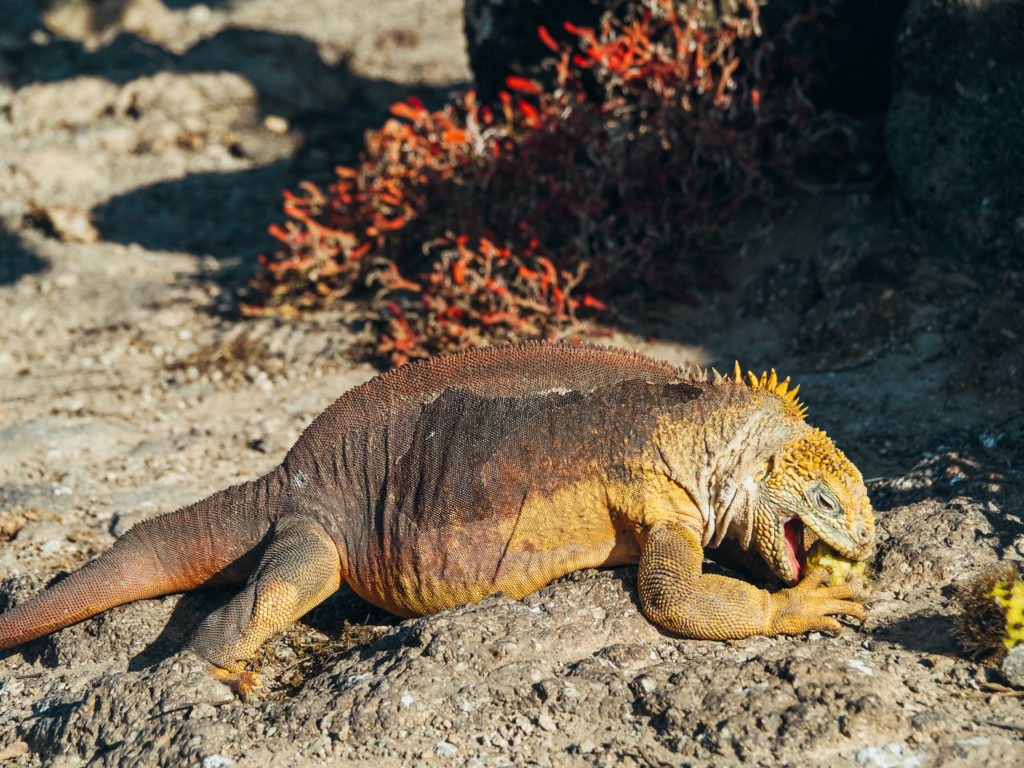
We observed different kinds of iguanas (some endemic to the Galapagos), frigate birds, blue-footed boobies, flamingoes, pelicans, swallow-tailed gulls, Darwin’s finches, red-billed tropic birds, and more. Of course, we saw plenty of sea lions lazily sun bathing on the beach, and even dozens of baby sea lion pups (we were there during birthing season). In addition, we also saw wild goats, snakes, crabs, giant tortoises, and more. The best part about coming to the Galapagos is you don’t have to look far or hard to spot wildlife–it’s right in front of you!
Probably the most significant thing about the wildlife in the Galapagos is they don’t fear humans–even the birds. They co-exist on these islands in peace and harmony because for hundreds of years the wildlife has been protected here, meaning they don’t feel threatened by humans! It was amazing to get close to the animals (no touching though!) and observe them in their natural habitat without them running or flying away.
SEA EXCURSIONS
Typically after a land excursion with Galagents, the pangas will take you back to the ship where you will eat lunch and have some down time on the boat before heading out for a sea excursion in the afternoon. Some days depending on the length of the land excursion though, you might do a sea excursion first, then have lunch and head to a different island for another land excursion later in the day. It is all dependent on your itinerary and schedule. Every day we had a sea excursion where we would suit up in our wet suits and head out on the pangas to various snorkeling spots.
You might be asking, “You had to wear wetsuits?” If you come to the Galapagos between June and November, the water can be chilly so a wetsuit is preferred. Between Dec and May though, the water is warmer and wetsuits might not be needed.
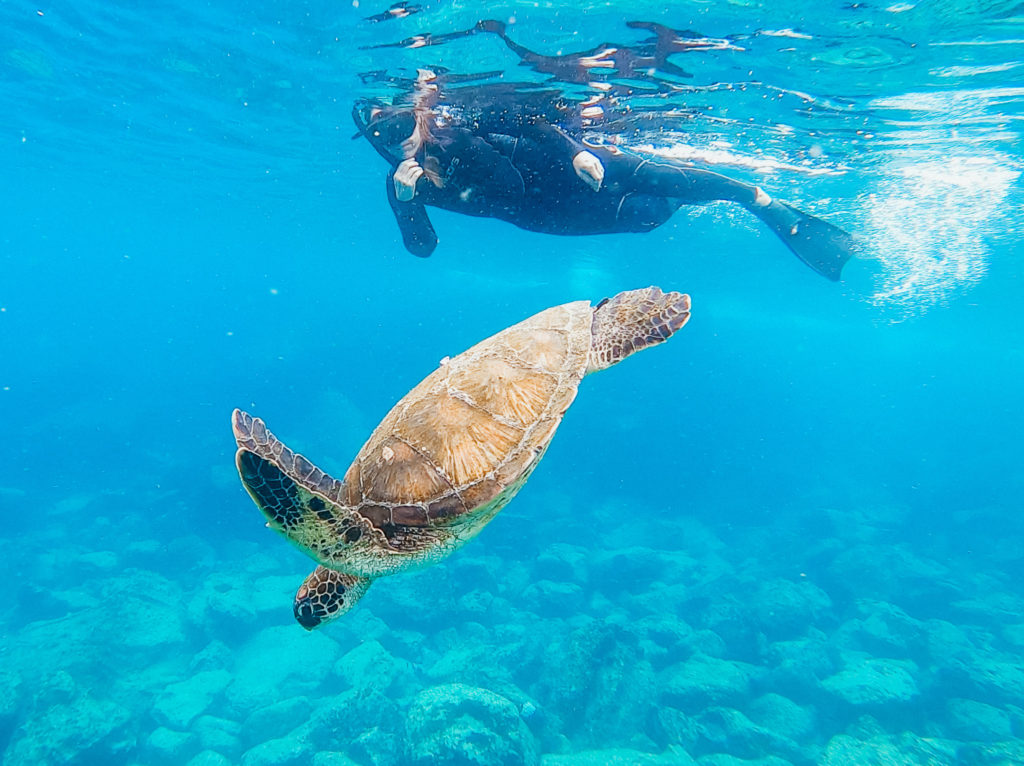
As amazing as it was to see all the incredible land animals, swimming with the marine life was the best part of each day on the cruise with Galagents. Every day you are guaranteed to see a plethora of marine animals and tropical fish–from sea turtles, marine iguanas, sting rays and eagle rays, sea lions, and even sharks. Luckily the sharks in the Galapagos are not a threat to people. They were absolutely exhilarating to see!
We saw several white tip reef sharks, hammerheads, and even a Galapagos shark. The sea lions were probably our favorite though because they are so playful and curious. We loved watching them gracefully and swiftly swim around us–they would even come up to our GoPro!
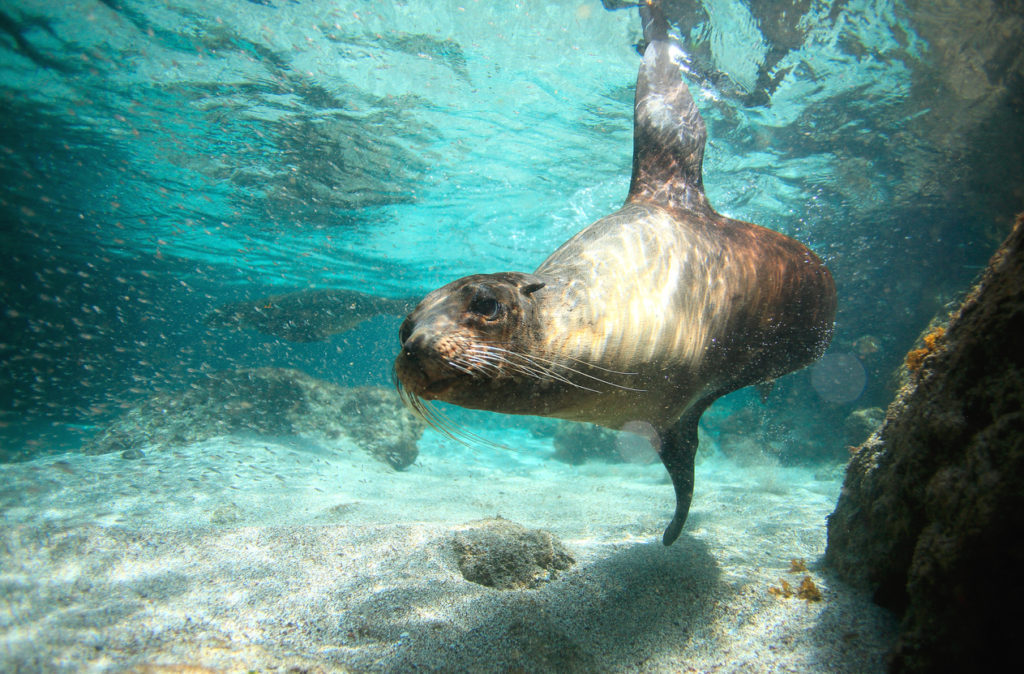
Each day on our cruise with Galagents, we would end with a breathtaking sunset (sometimes watched on land, other times on the ship) which was such a treat after an amazing day! Dinner was usually served after sunset and then you had time to lounge, play games, or watch a movie. The last night of our cruise, the entire staff aboard Eco Galaxy dressed up in pirate attire and we had a dance party. Perfect way to end the cruise!
As mentioned above, our cruise in the Galapagos with Galagents was the highlight of our trip on these islands. In fact, I would dare say that it was one of our favorite trips EVER! Living aboard a boat and cruising around the Galapagos is absolutely the best way to really experience these enchanting and unique islands because you see a side of the Galapagos that most don’t see. You get off-the-beaten-path and have a once-in-a-lifetime adventure that the whole family will never forget.

Day 10-14: San Cristobal
If you choose to spend 7 or 10 days in the Galapagos Islands (and part of that is on a cruise), then disregard the following. However if you are able to stay a few extra days on the islands (or forego the cruise and split your time between 2 different islands), we would highly recommend hopping over to San Cristobal. We spent the last 3 days of our trip on this island and it was equally as magical as Santa Cruz, yet different.
In order to get to San Cristobal, you must take a ferry from Puerto Ayora (the most economical way), or book a flight on a small puddle jumper plane (more expensive). It’s important to note that the ferry typically only makes trips 2 times per day from Santa Cruz to San Cristobal. With that said, you need to plan accordingly and book ahead since the ferries only have limited capacity. The ferry usually leaves around 7AM and then again later in the afternoon, around 3PM.
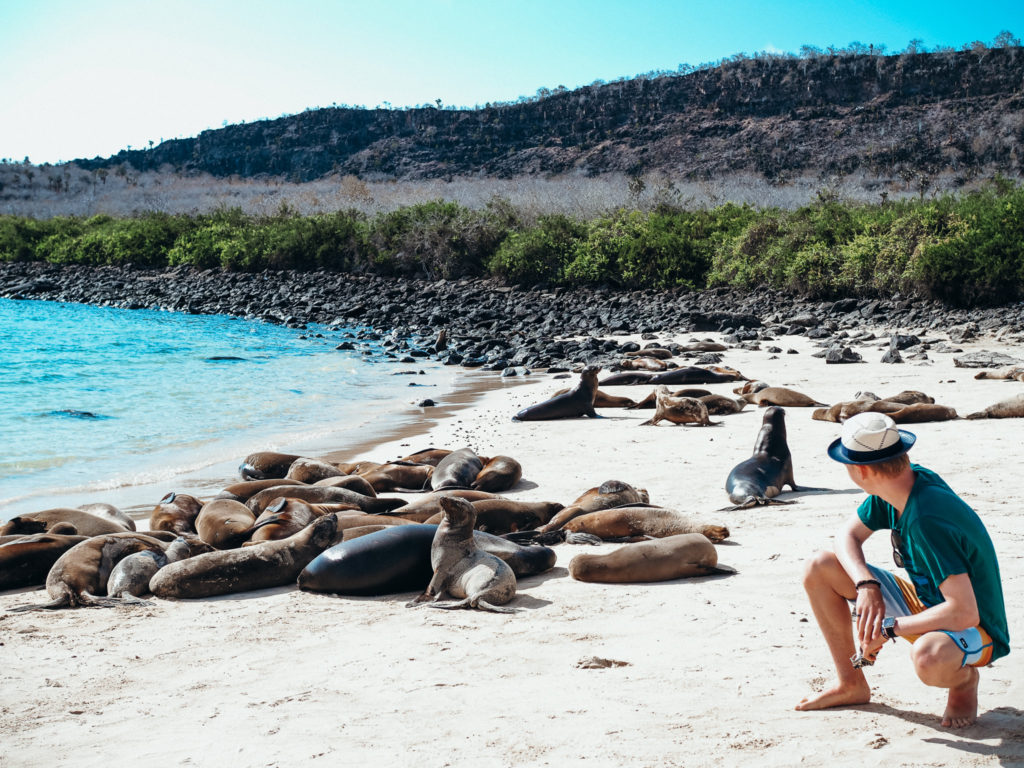
The ferry costs around $35 per person (children under 10 are $17) and takes about 2-2.5 hours to get there. Once you arrive to the island of San Cristobal, you will be in the main port town of Puerto Baquerizo Moreno. Be prepared to see lots of sea lions when you disembark all over the dock, pier and benches! They rule the town here!
Most accommodations are in the town and the good news is you can find fairly economical hotels too–we loved staying at the Cactus Hotel. It only cost about $50/night for our family and included breakfast! Make sure to use Booking.com to view all of the options for your budget in San Cristobal.

One thing you must do on the island of San Cristobal is visit some of the beaches here. We absolutely loved Punta Carola, Playa Baquerizo and Puerto Chino for just relaxing and swimming. We also loved La Loberia, although this is an advanced surf beach so likely you won’t swim here. It’s a beautiful rocky beach and sunsets are fabulous here. Same with on Punta Carola, so don’t miss watching a sunset on either of these beaches!
Another beach that is worth visiting on San Cristobal is Cerro Tijeretas which is located about 1 mile from the Interpretation Center (you can hike there from town). It is the ideal place to enjoy a spectacular view of white sand beaches on one side and the roofs of Puerto Baquerizo on the other. This beach offers a diverse array of flora, and is safe snorkeling and swimming.

You could easily spend a couple of days just hitting up the beaches of San Cristobal, but if you want a little more adventure and want to see some more remote places on or near the island, there are a few day trips we would highly recommend. The #1 day trip on San Cristobal we suggest is to Kicker Rock (Leon Dormido). It’s also a popular day trip but due to strict regulations in the Galapagos, you won’t see many other tour operators there all at the same time.
A few important things to note: There are many tour operators in town that promote a “360 tour” of San Cristobal which includes various activities and sights of interest around the island, however we were told by several locals to skip that tour and just choose the day trip to iconic Kicker Rock. Why? Because you get more time at Kicker Rock to snorkel and enjoy this incredible rock structure, plus spend time at a beautiful remote beach nearby. Let’s just say we made the right choice. Our day at Kicker Rock ended up being one of our favorite days in the Galapagos.
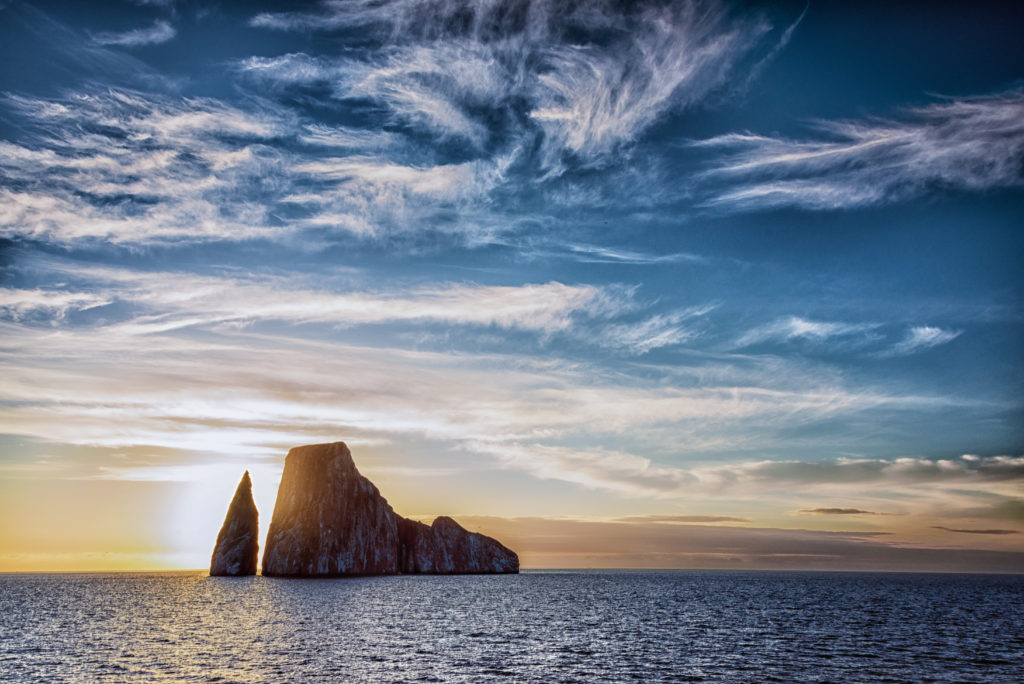
We chose the tour company Wreck Bay, as they came highly recommended by a guide and scuba diver from Santa Cruz. They did not disappoint. We started the day early at their shop and then boarded a boat to take us to Kicker Rock. After about an hour boat ride, we arrived to this infamous rock. Our guide taught us about the wildlife and marine life that lives here and then we prepared to go snorkeling.
We then got in the water to snorkel on one side of the rock and were amazed at the marine life, as well as the coral and other organisms that exist on the rock. We’ve never seen such colorful and healthy coral! In addition to the coral and fish, we observed sea lions, hammerhead sharks, sea turtles and even an eel! After about an hour of snorkeling, we got back in the boat and the captain took us all around the island so we could get different views and perspectives of Kicker Rock.
Then we got back in the water and snorkeled for another hour or so. Basically we made our way around the entire Kicker Rock and even snorkeled between the two rocks. It was awesome! This tour cost about $120/person and included snorkeling equipment, a wet suit and lunch. After we finished snorkeling at Kicker Rock, the boat dropped us off at this gorgeous, remote beach where we relaxed, swam some more with sea lions and took photos. Such an unforgettable day!
If you find that you have more time on San Cristobal, there are some other great day tours that include a trip to Espanola Island (a popular place to see blue footed boobies), Junco Lagoon, Punta Pitt, and La Galapaguera Tortoise Habitat (if you haven’t had your share of giant tortoises yet).

Conclusion
The Galapagos Islands is one of the most special and unique destinations in the world and the ultimate trip with kids. If you’re a nature and wildlife enthusiast, this will be one place that you will want to return to over and over again. It might be a little more expensive than other destinations in South America, but trust us, it’s 100% worth the splurge.
Do you have the Galapagos on your bucketlist?


